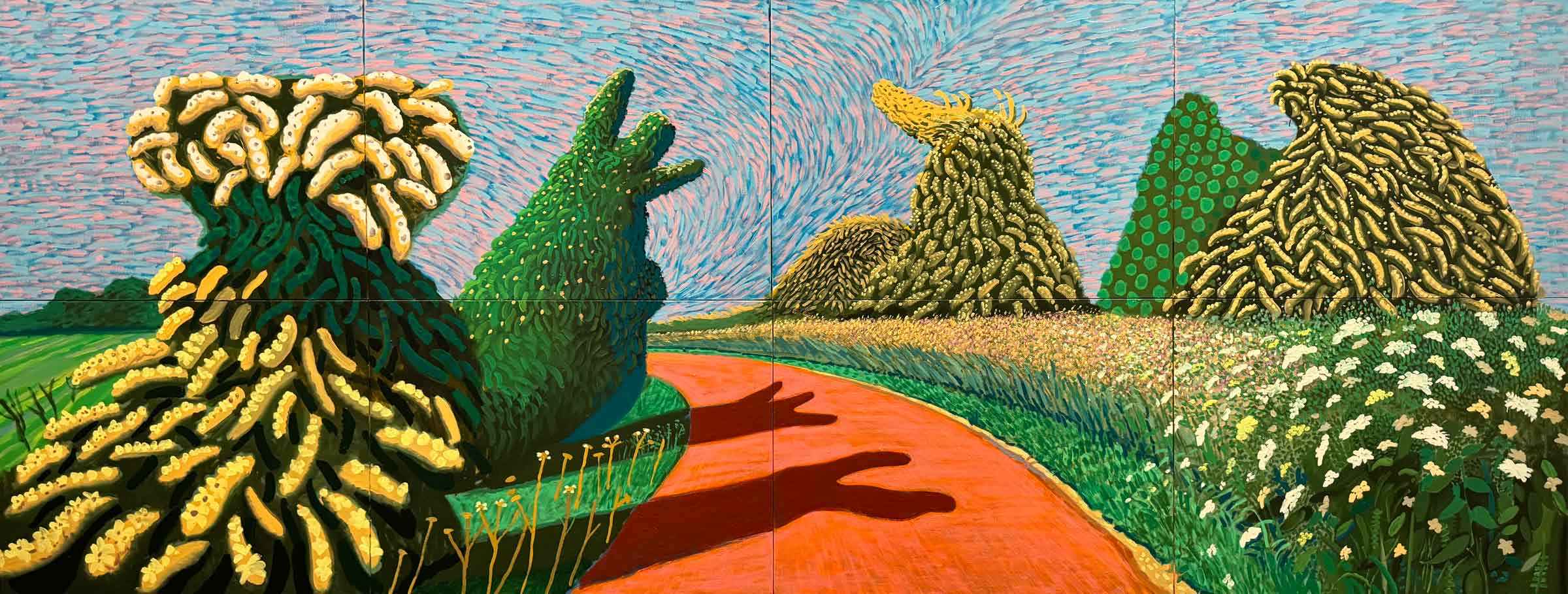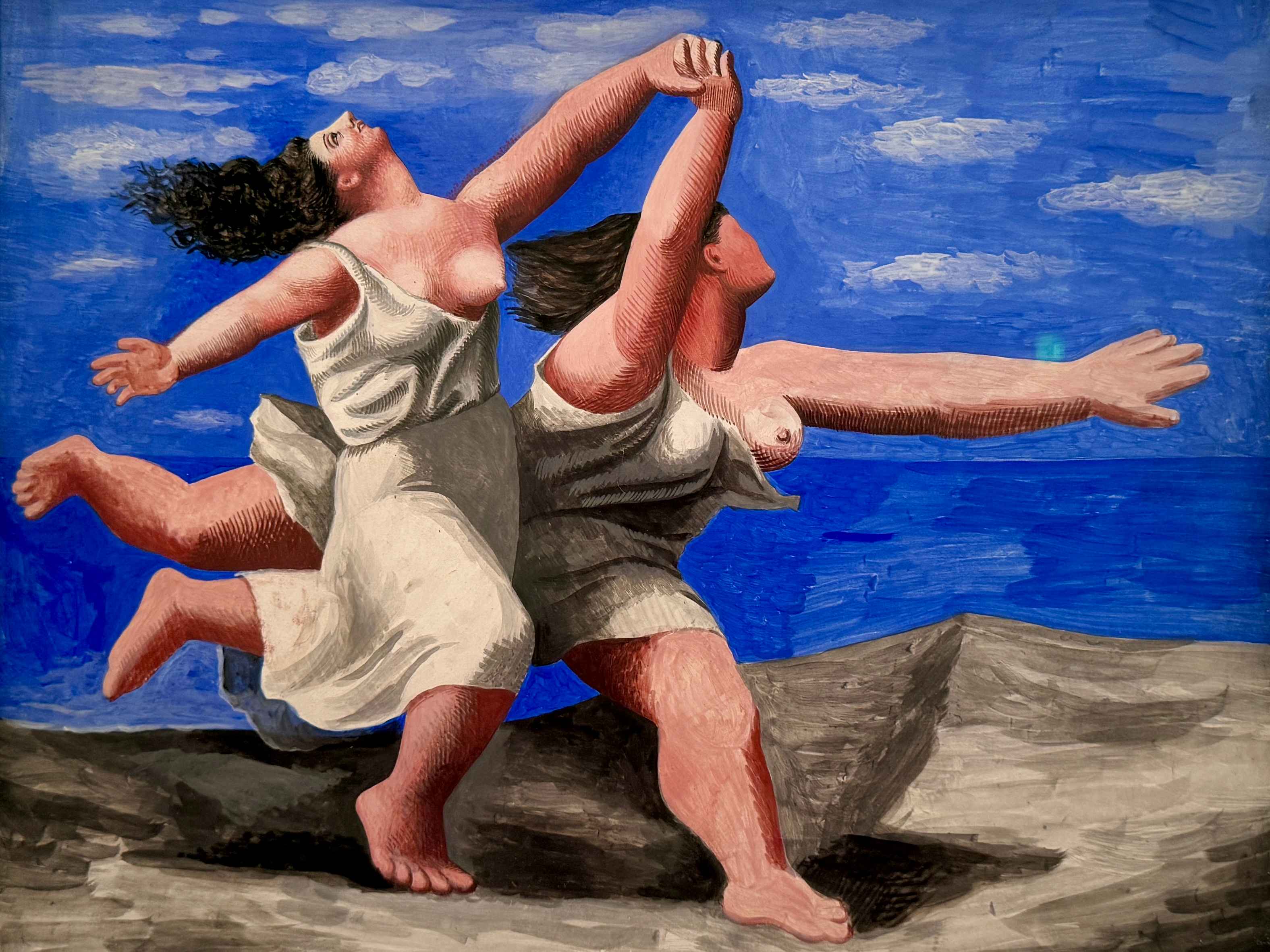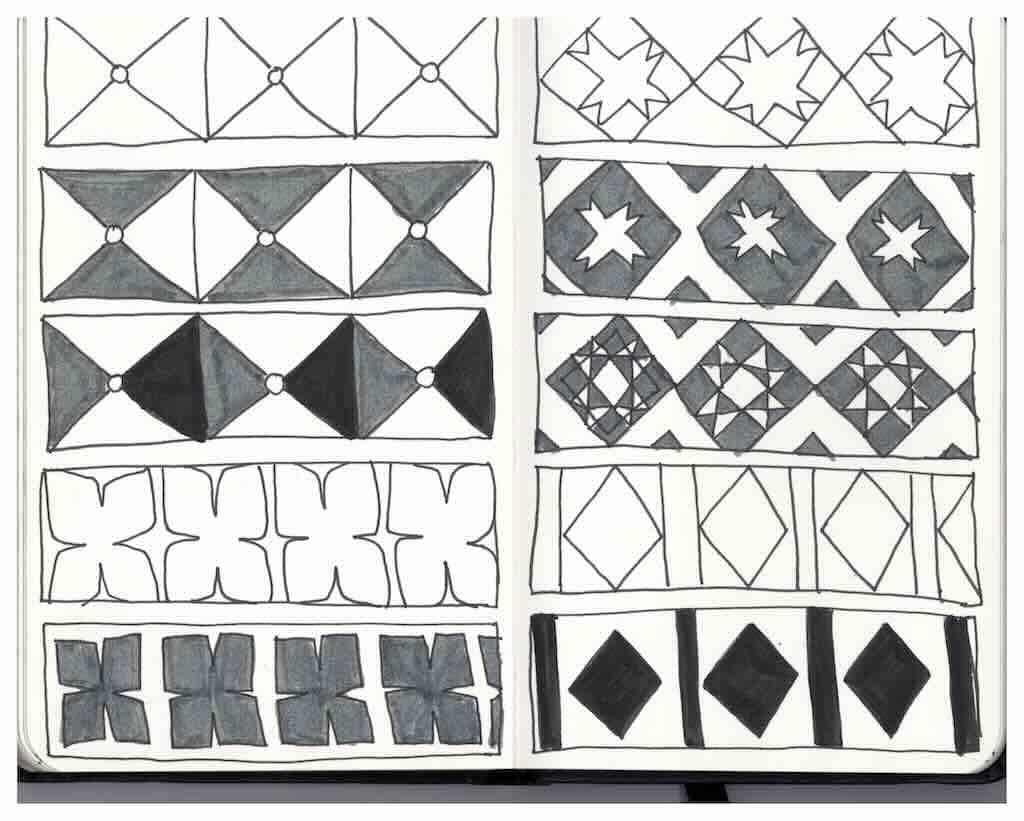
Look up! | The Natural History Museum
During a recent trip to the Natural History Museum, I found myself taking more pictures of the building itself than the artefacts, so I wanted to share the sense of awe I felt with all of you.
As so many of us today go through a lot of life looking a few inches away from our nose - at phone screens, computer screens, or perhaps, at an embroidery - it’s easy to stress the importance of looking around and being aware of your surroundings. While looking at your surroundings can be a great source of inspiration (as I explain in this creative exercise for our studio members), what I’d really like to talk about is specifically looking up.
In daily life, looking up is usually something we associate with slow-walking tourists, or little children. But this sense of wonder at the world around you is precisely what we should be aiming for. Some of the most incredible artworks can be found in plain sight, up high above our heads - statues, engravings, motifs, mosaics... there's a world of inspiration to discover if you take the time to lift your eyes.
While you could fill whole libraries with examples of wonderful decorative art that exists above eye level, I’ve chosen to focus this article on the Natural History Museum in London.
When I arrived at the Natural History Museum, I was so stunned by the building itself that I actually forgot to look at any of the exhibits. The moment you see the museum, you know it’s going to be special. The building looks like a striped cathedral, gleaming in central London, with dinosaurs positioned outside.

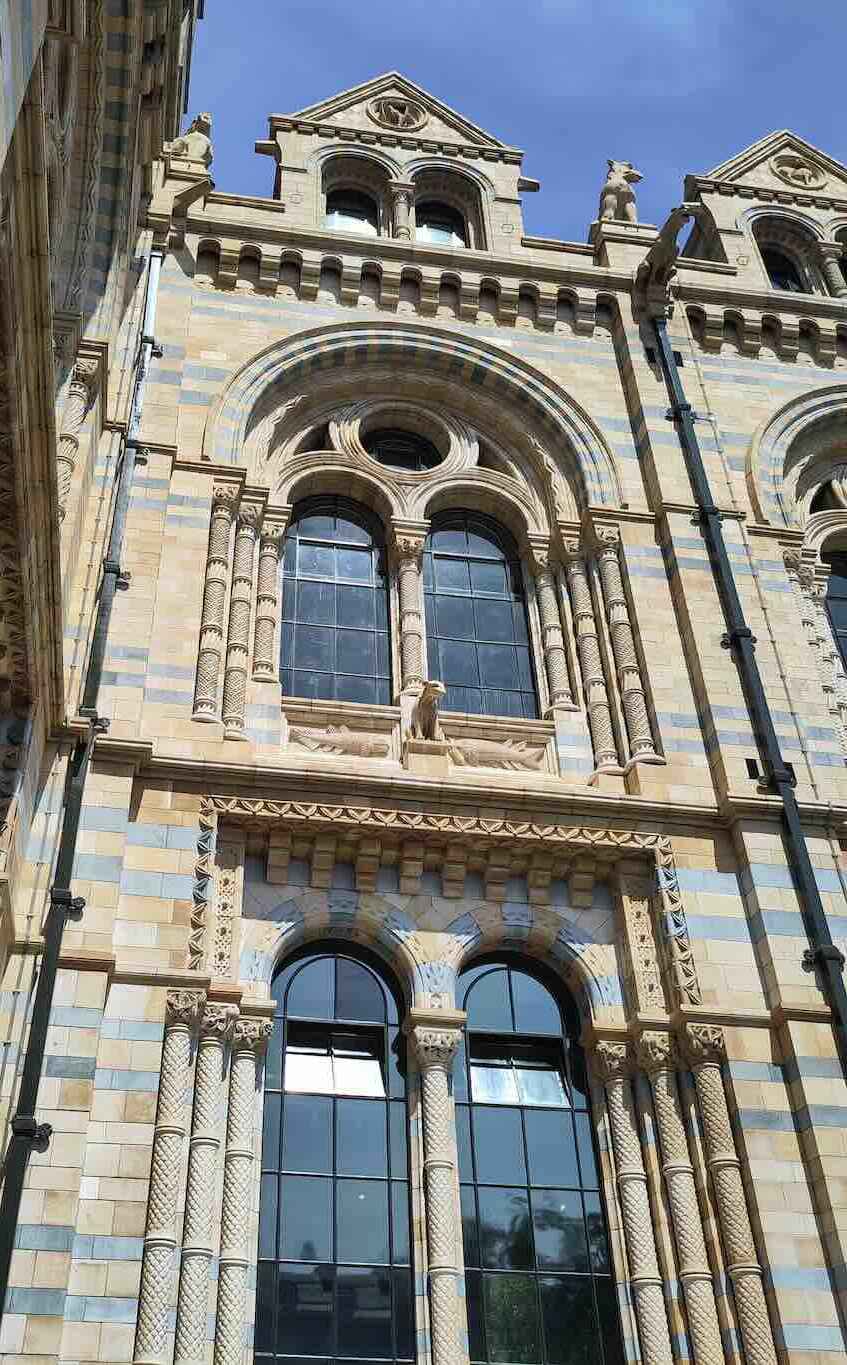

Designed by Alfred Waterhouse, the building first opened to the public in 1881. Filled with carvings, statues, and ornamental features, all depicting animals and plants, the museum is an incredible piece of architecture.
As you approach the doors, with the queue of people moving you forward, there’s no time to appreciate the intricatelycarved columns towering on either side of the doors. The building is so elaborately decorated that even if you’ve been there many times, there are always new things to notice, whether that’s a ram’s head at the base of a column, the fish engravings in the museum shop, or shells and insects over an arch.
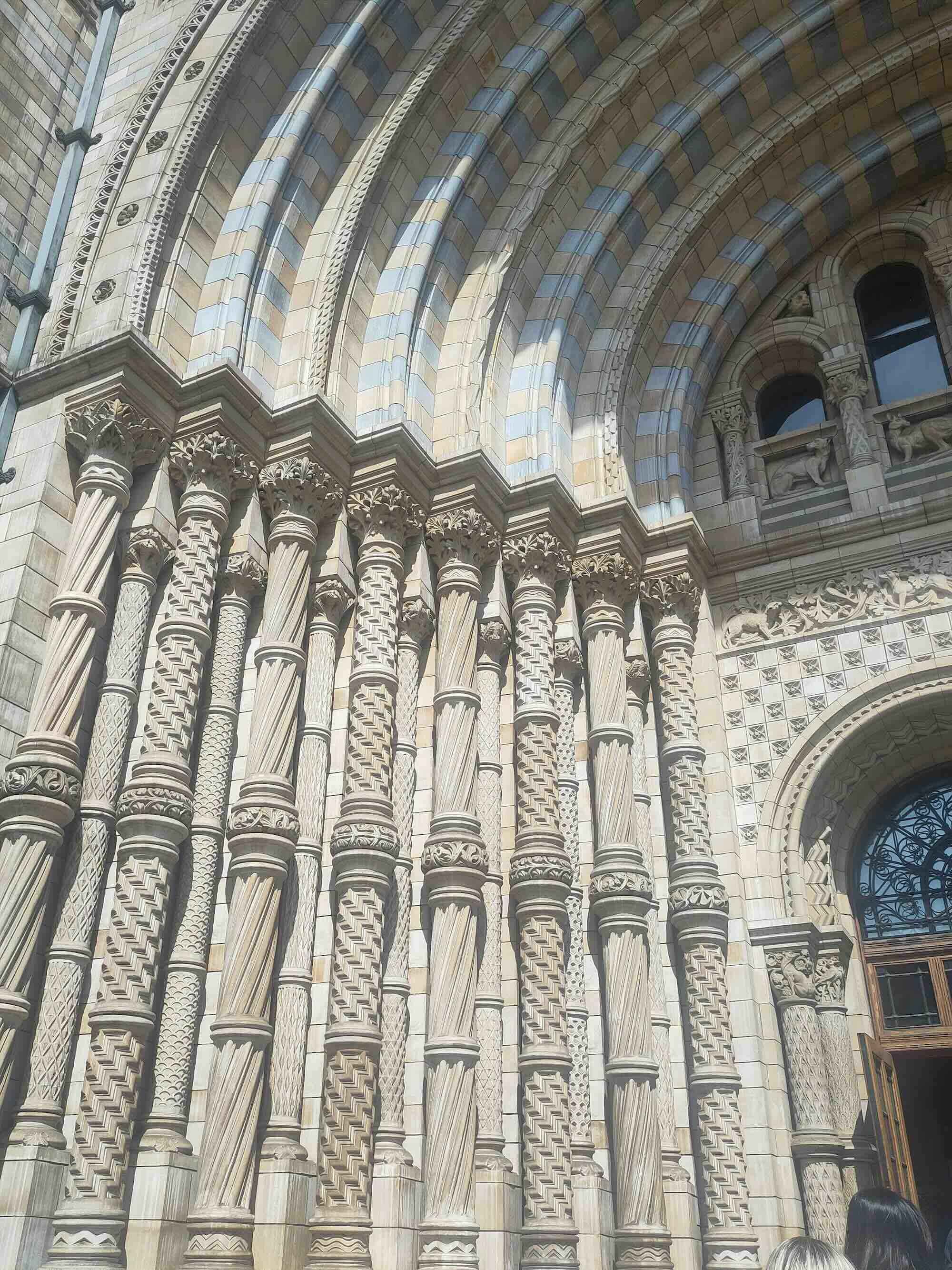
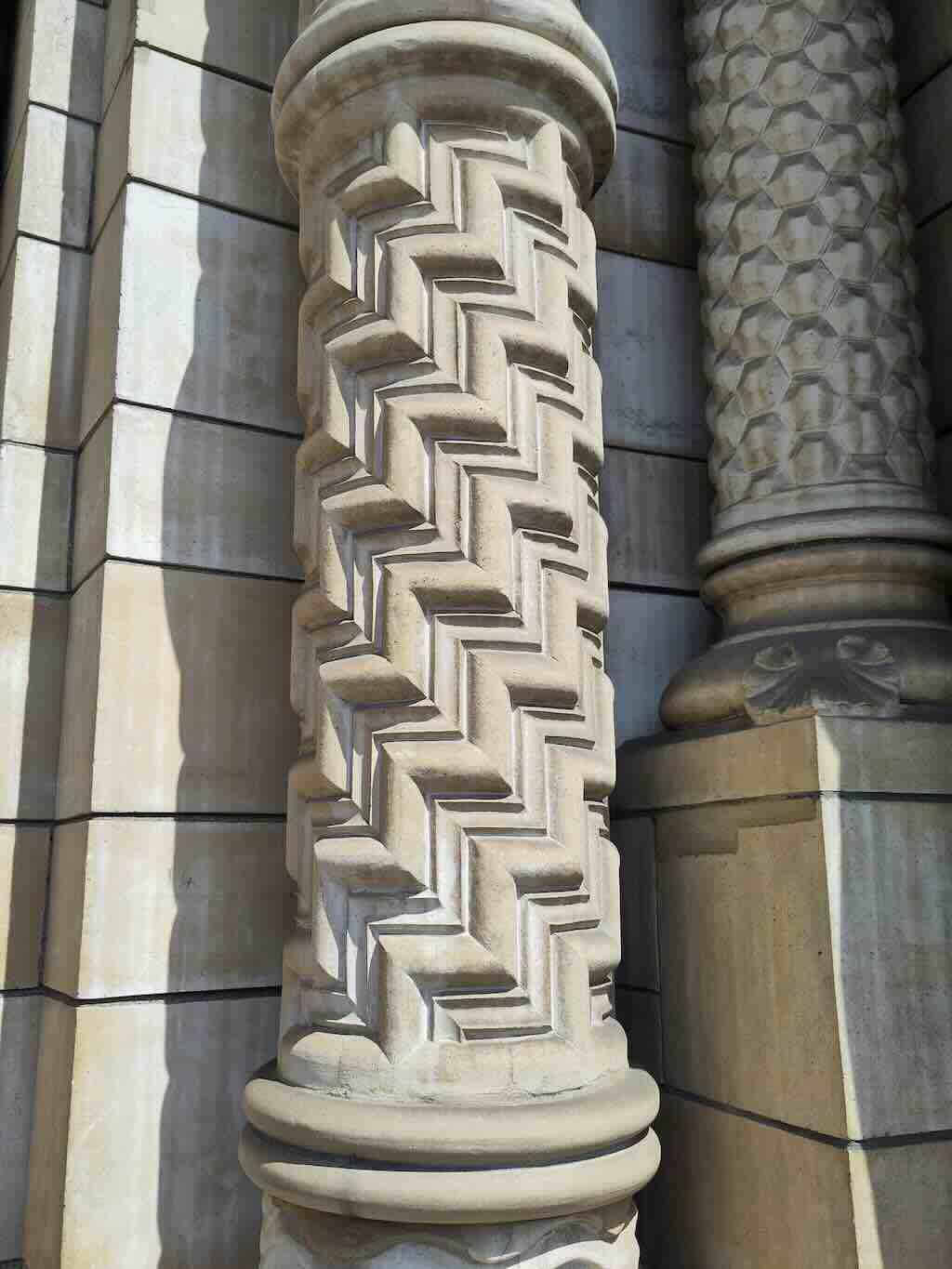
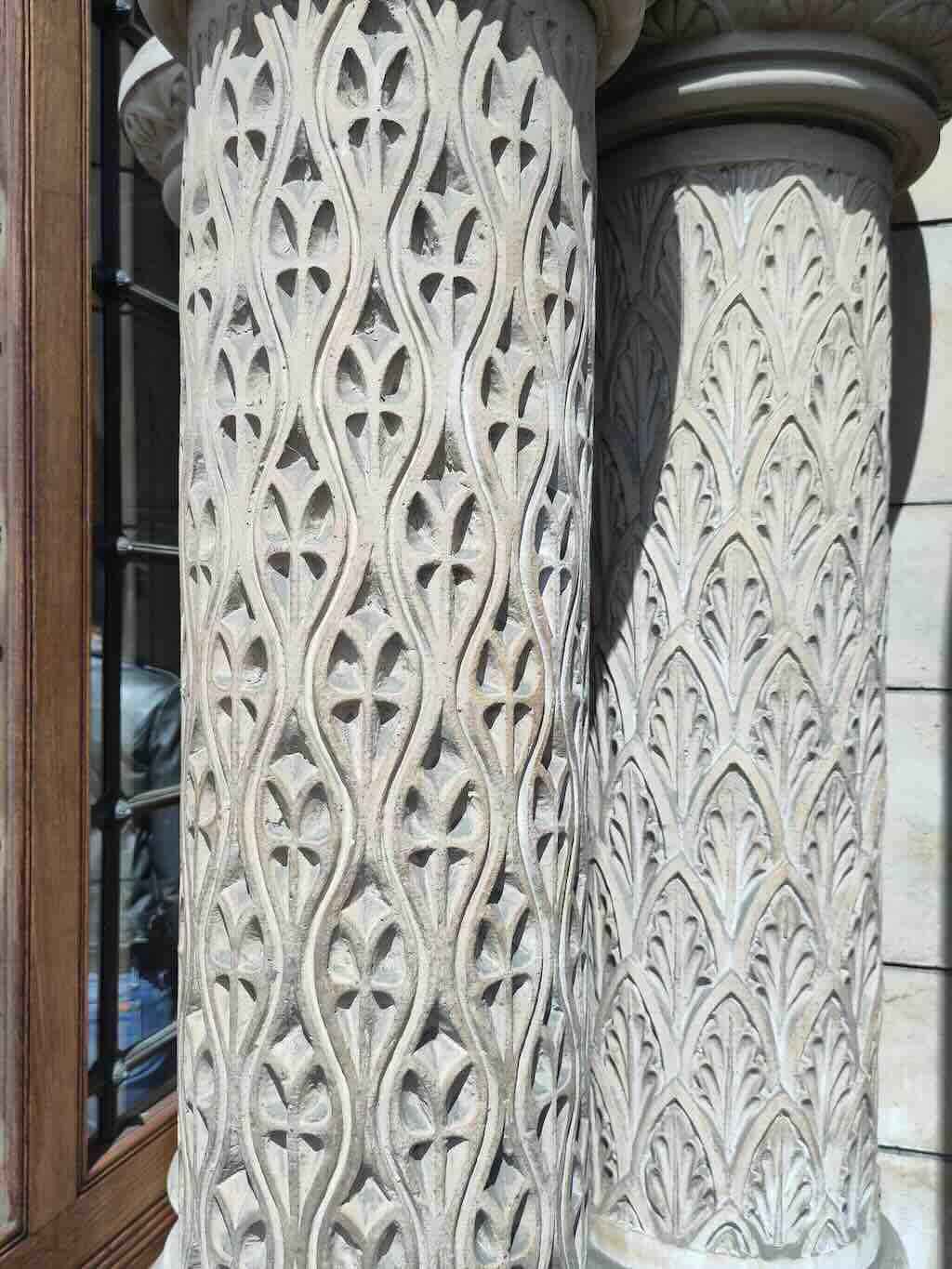
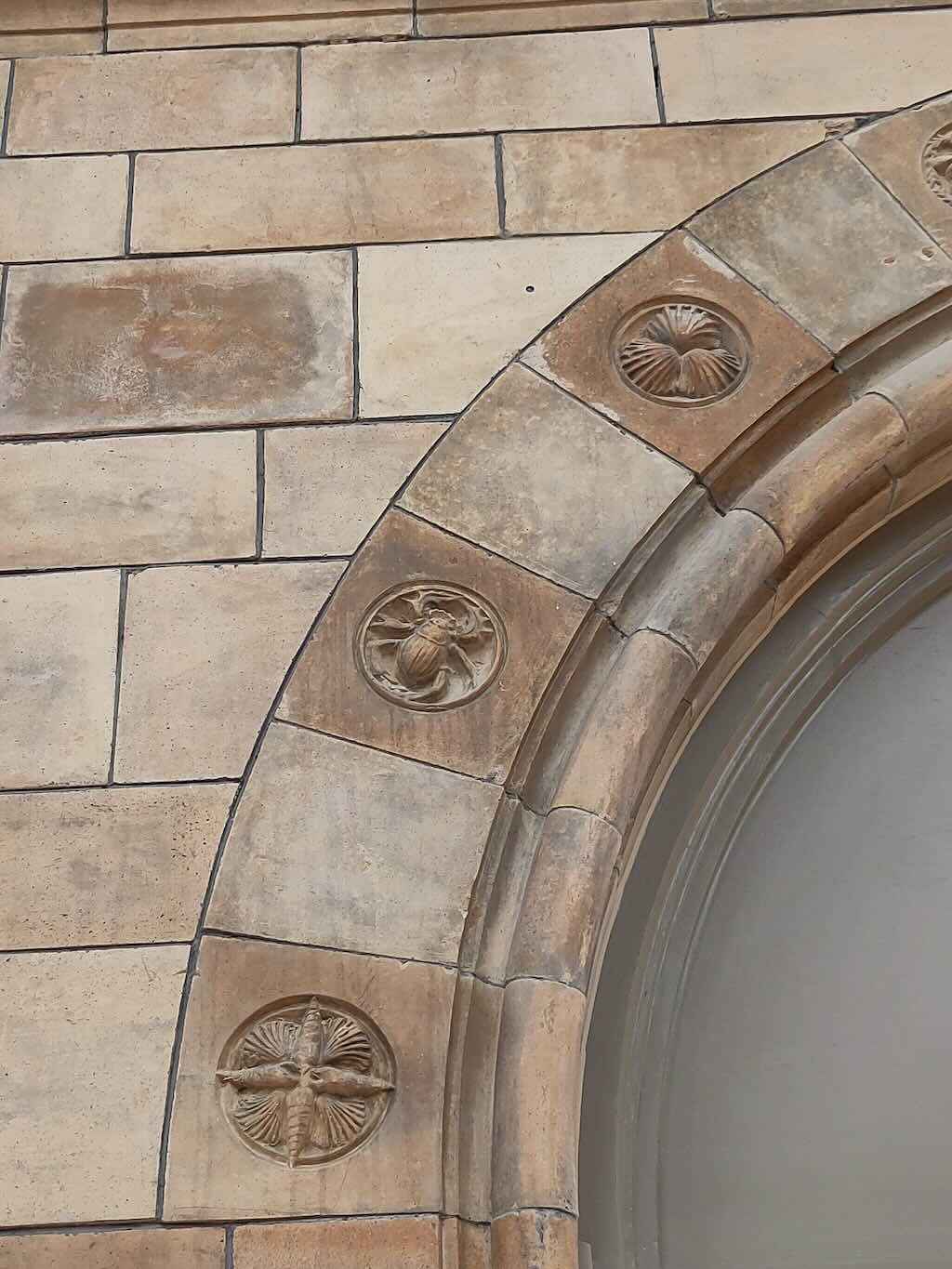
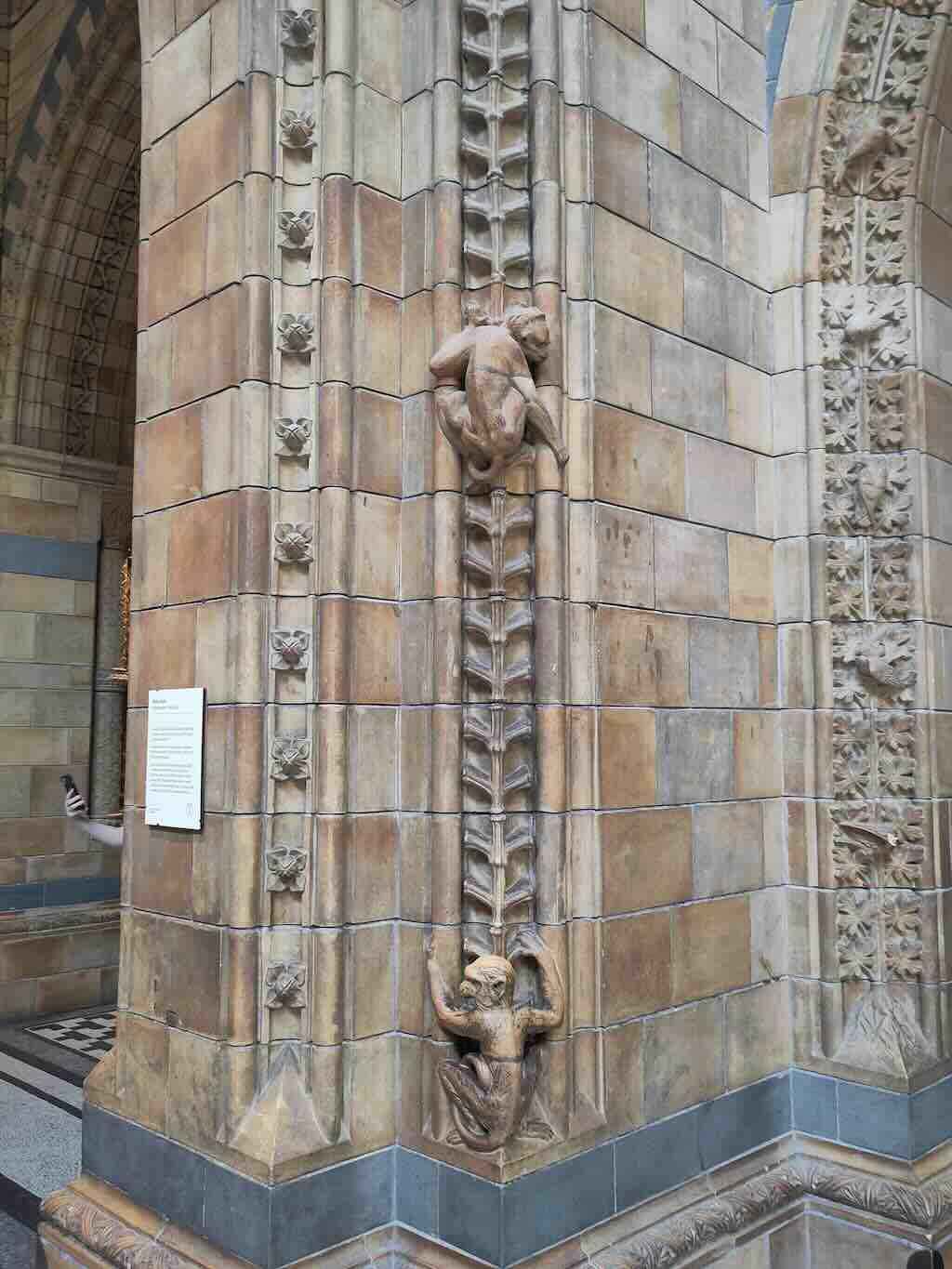
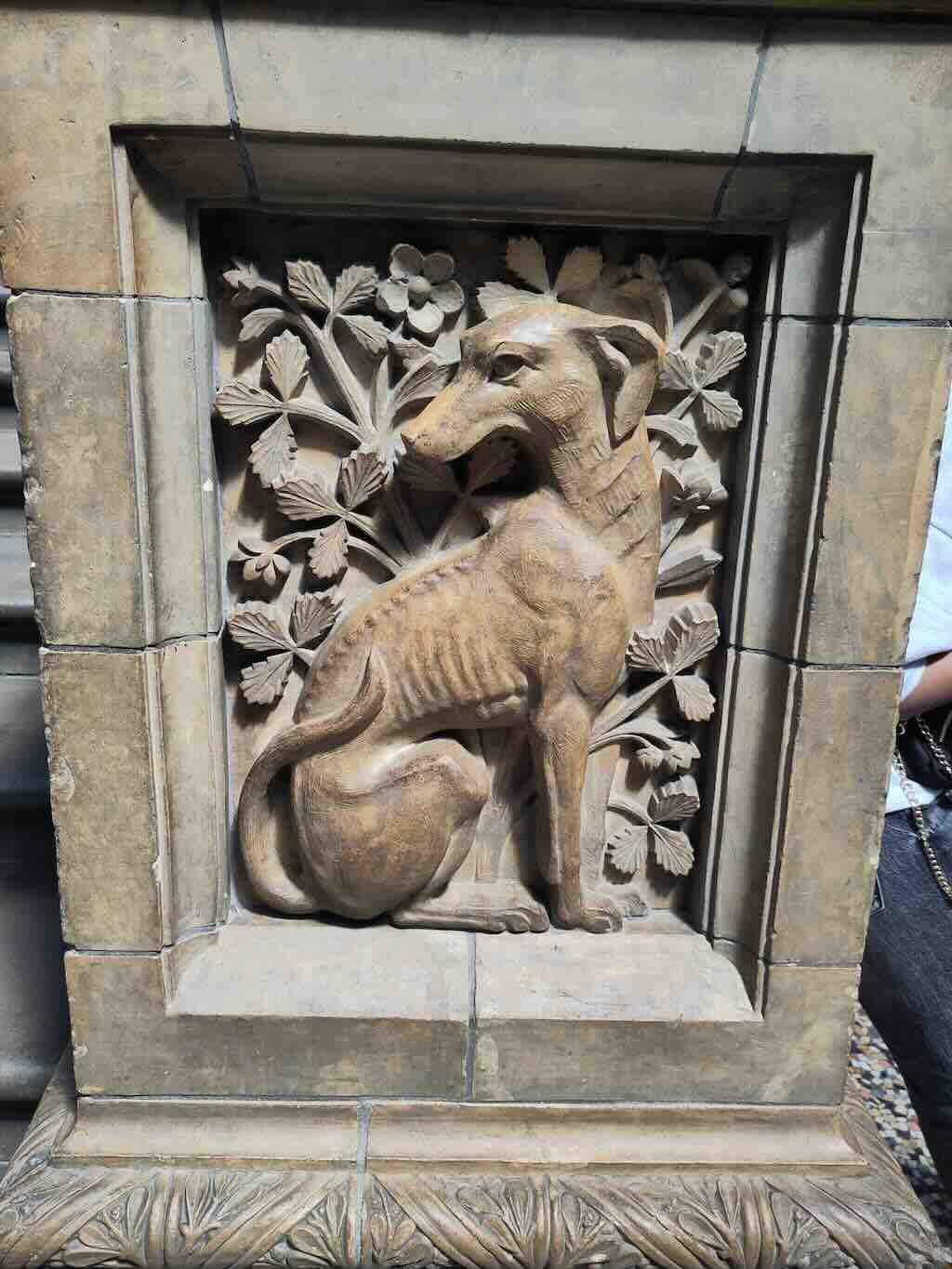
The blue whale skeleton hanging from the ceiling is of course incredible, but I still found myself looking past this to stare up at the painted ceiling in fascination. In the main hall there are 162 individual panels, all hand-painted with delicate botanicals. With our ever-expanding botanicals range, and our stand at the Chelsea flower show, the ceiling immediately drew my eye.
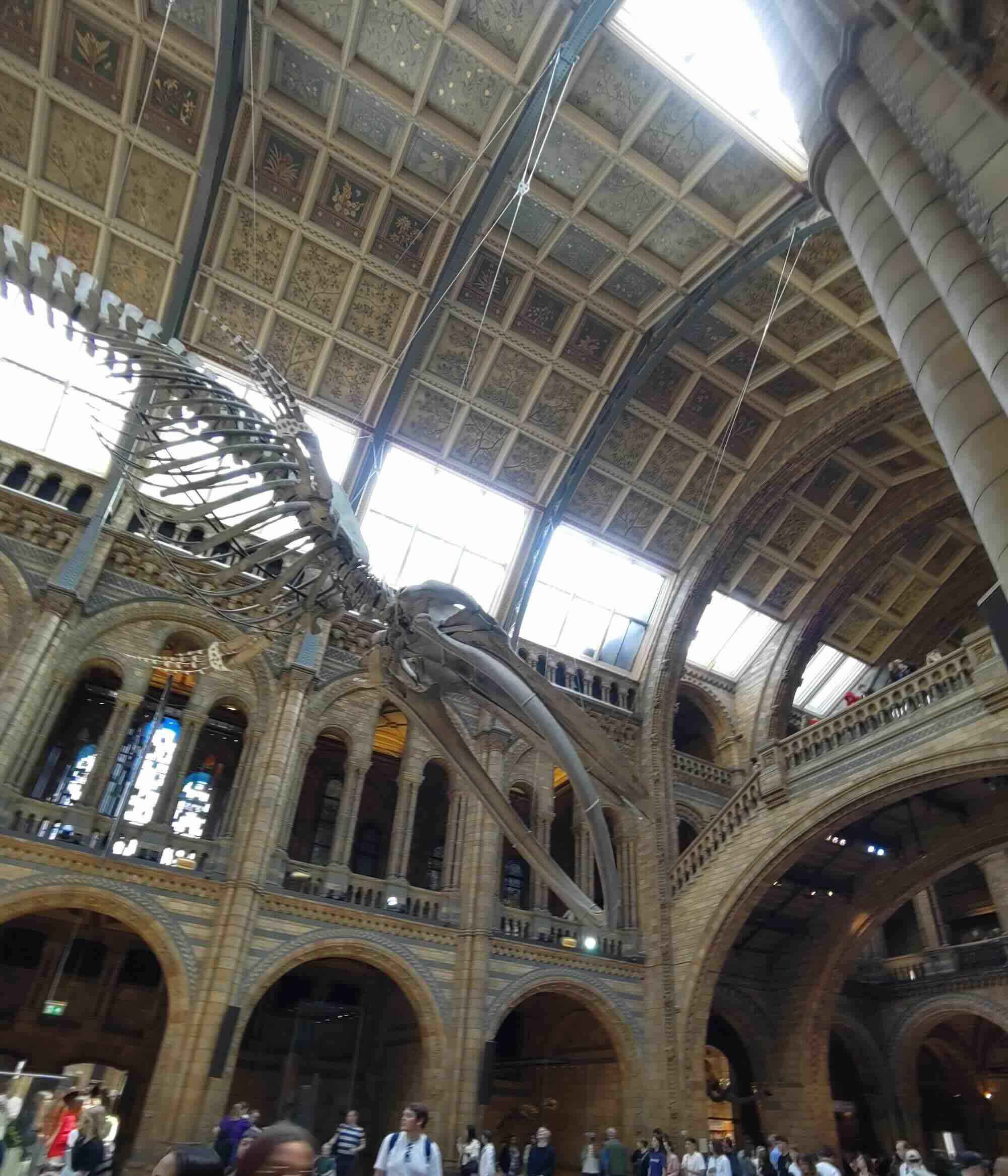
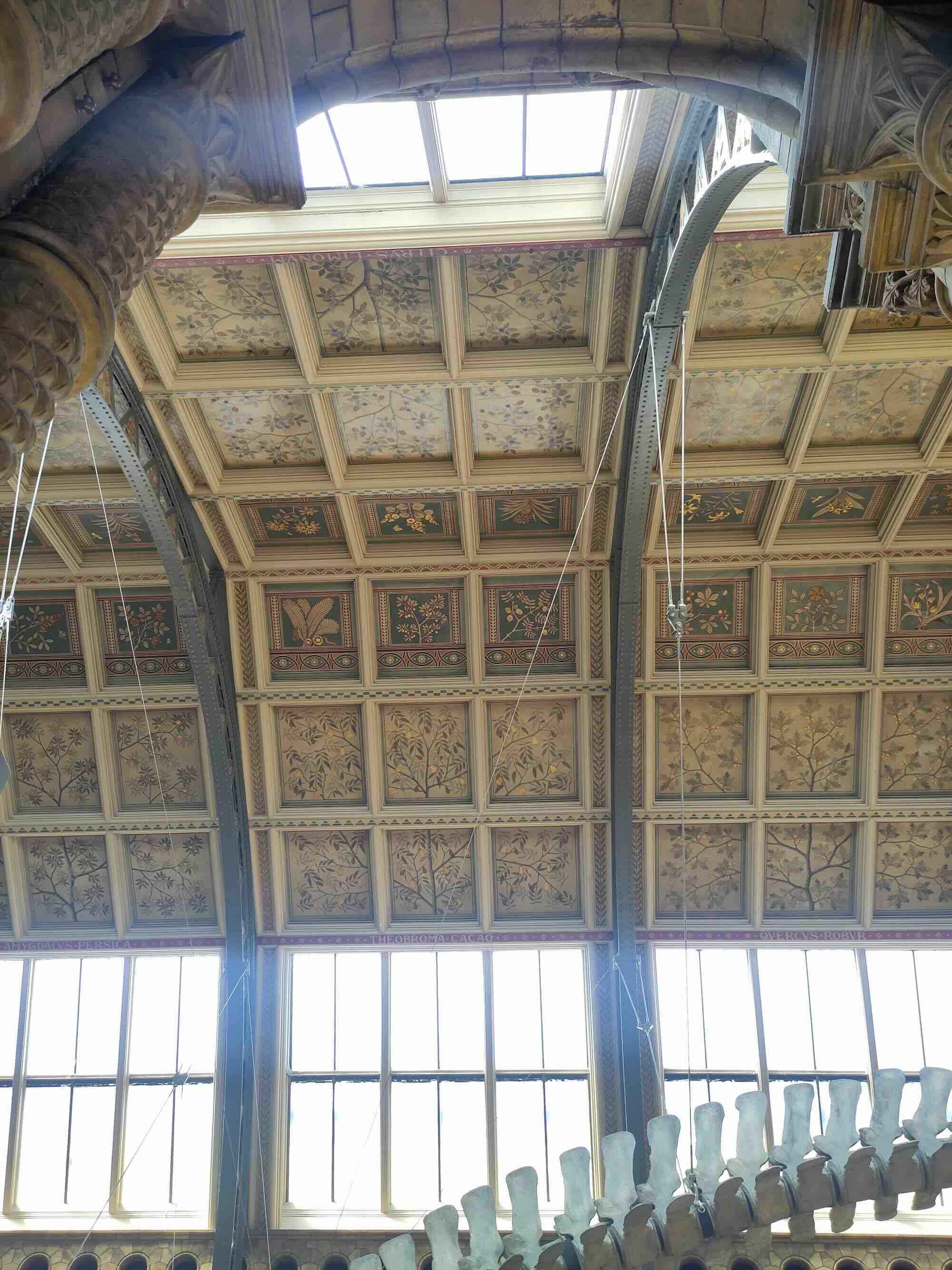
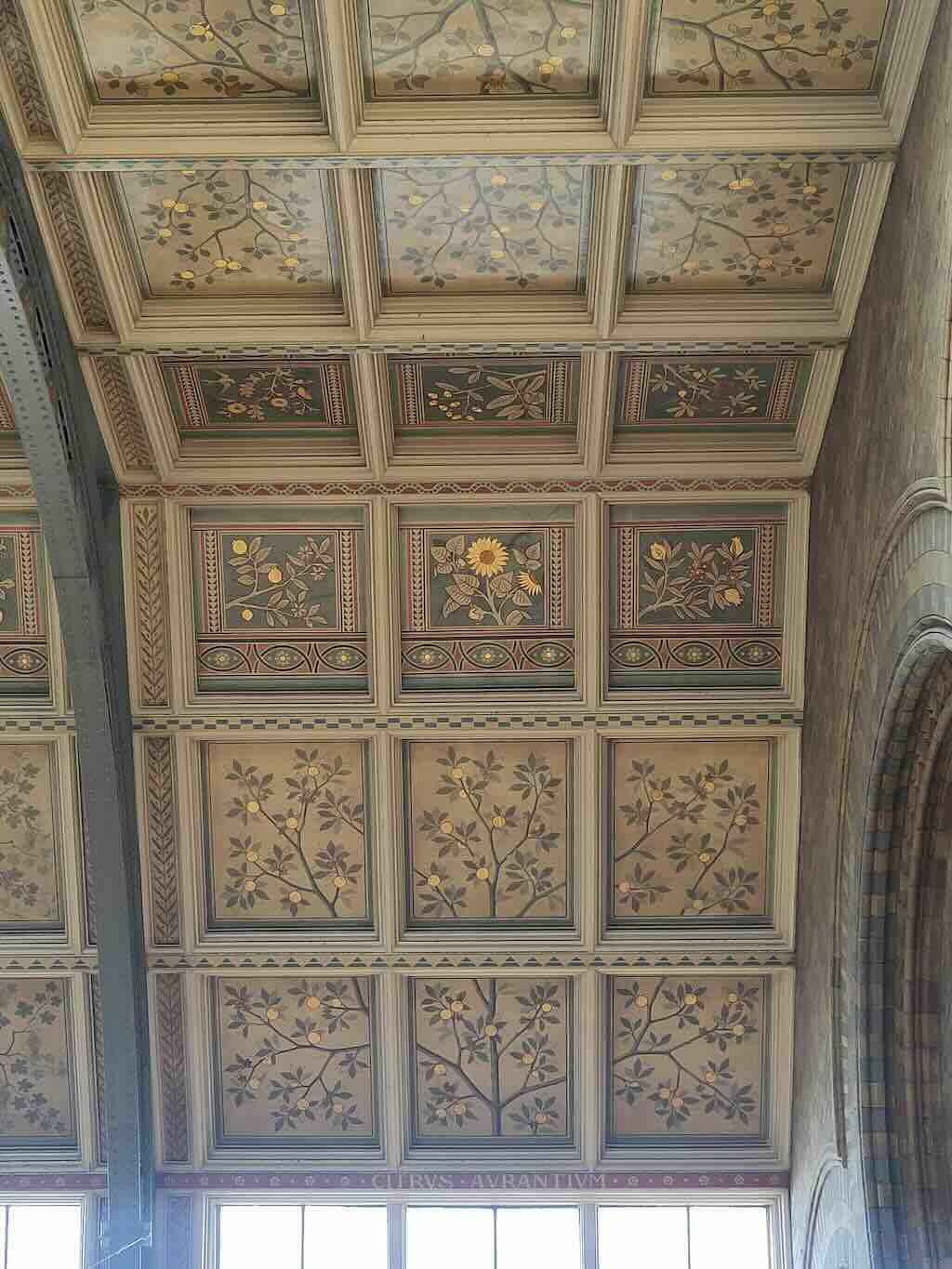
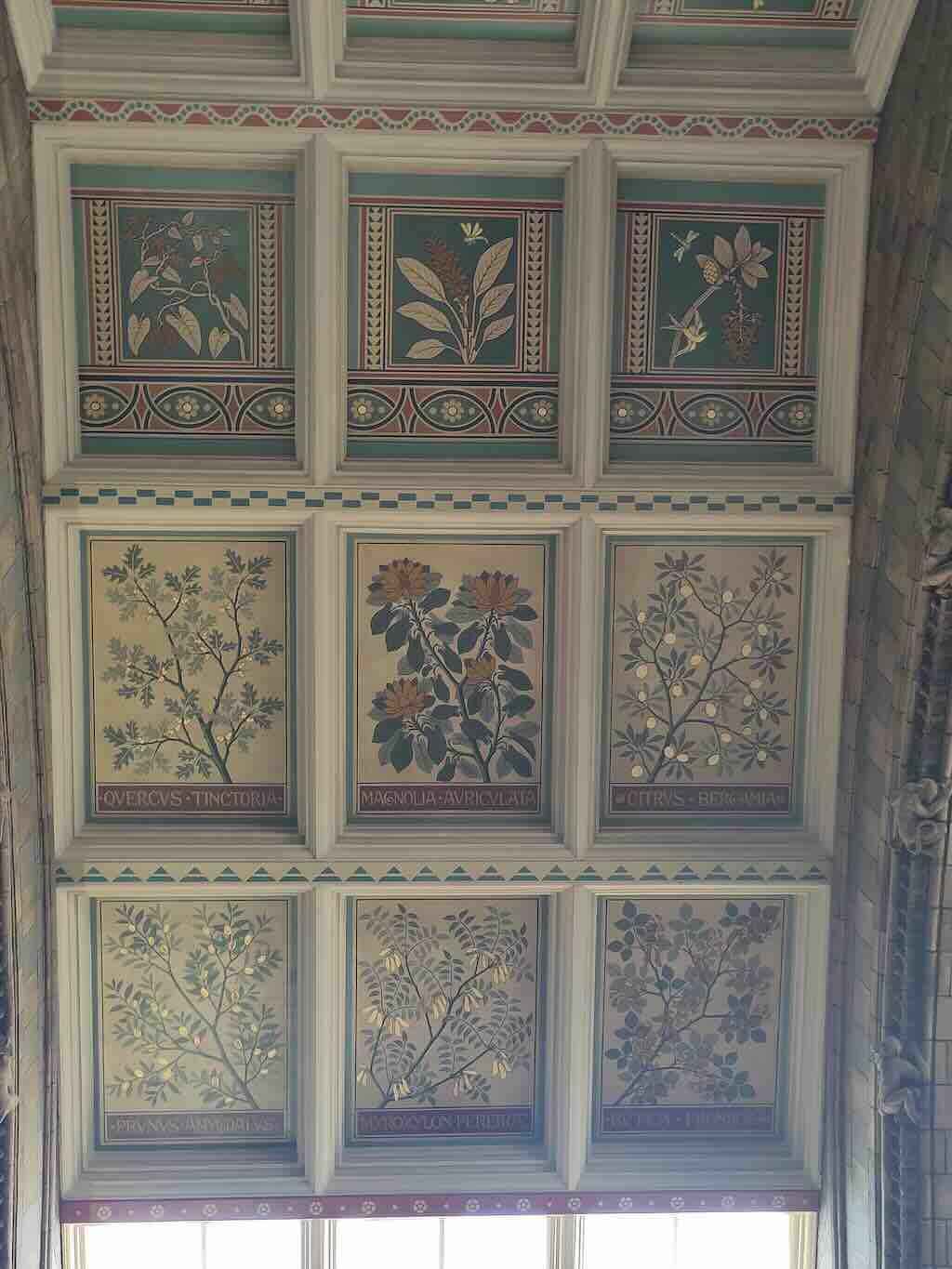
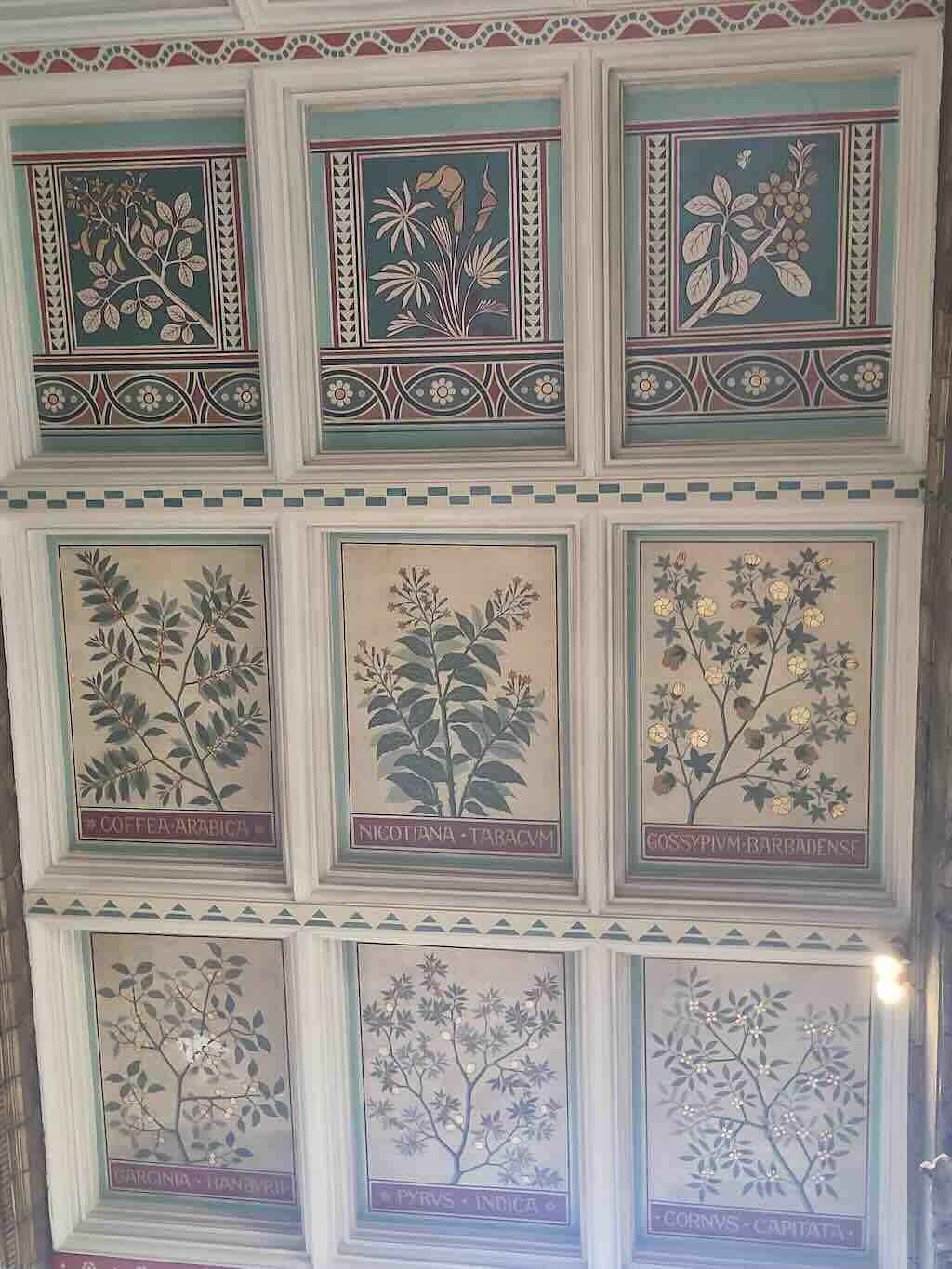
The other ceilings also have incredible details, with motifs and animals framed in squares. These have such wonderfully bold and expressive outlines – they instantly made me want to make an embroidery inspired by them.
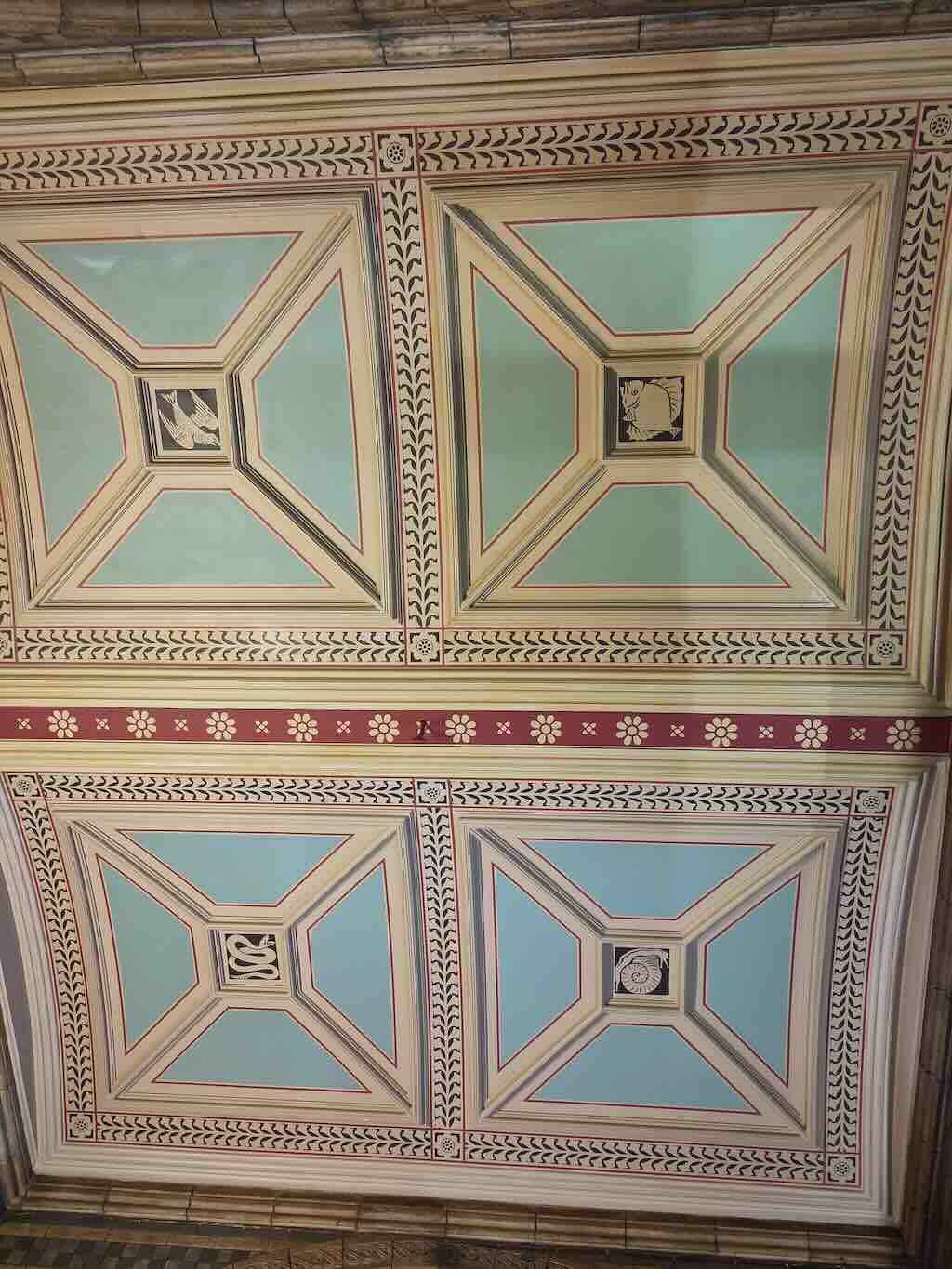
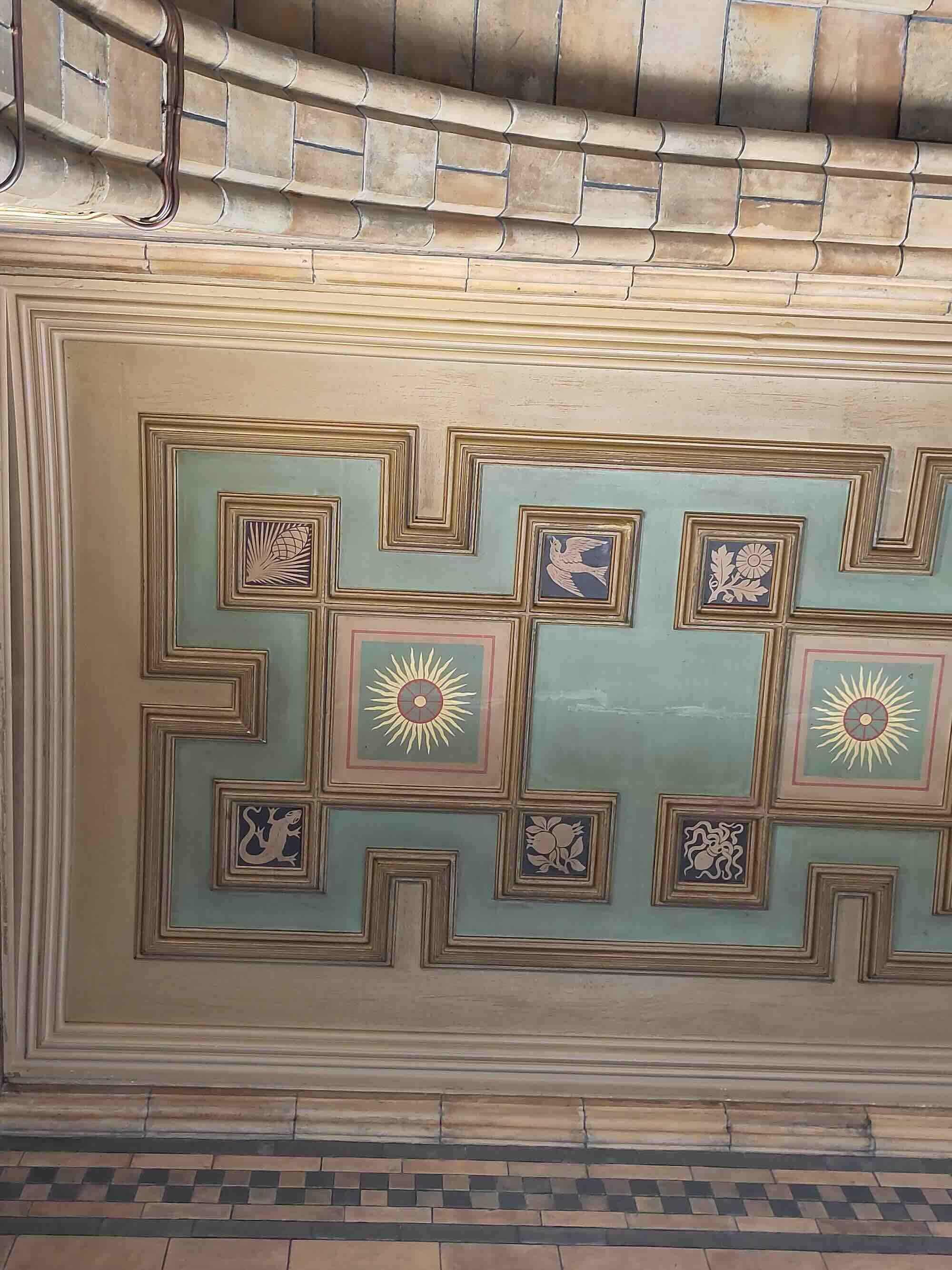
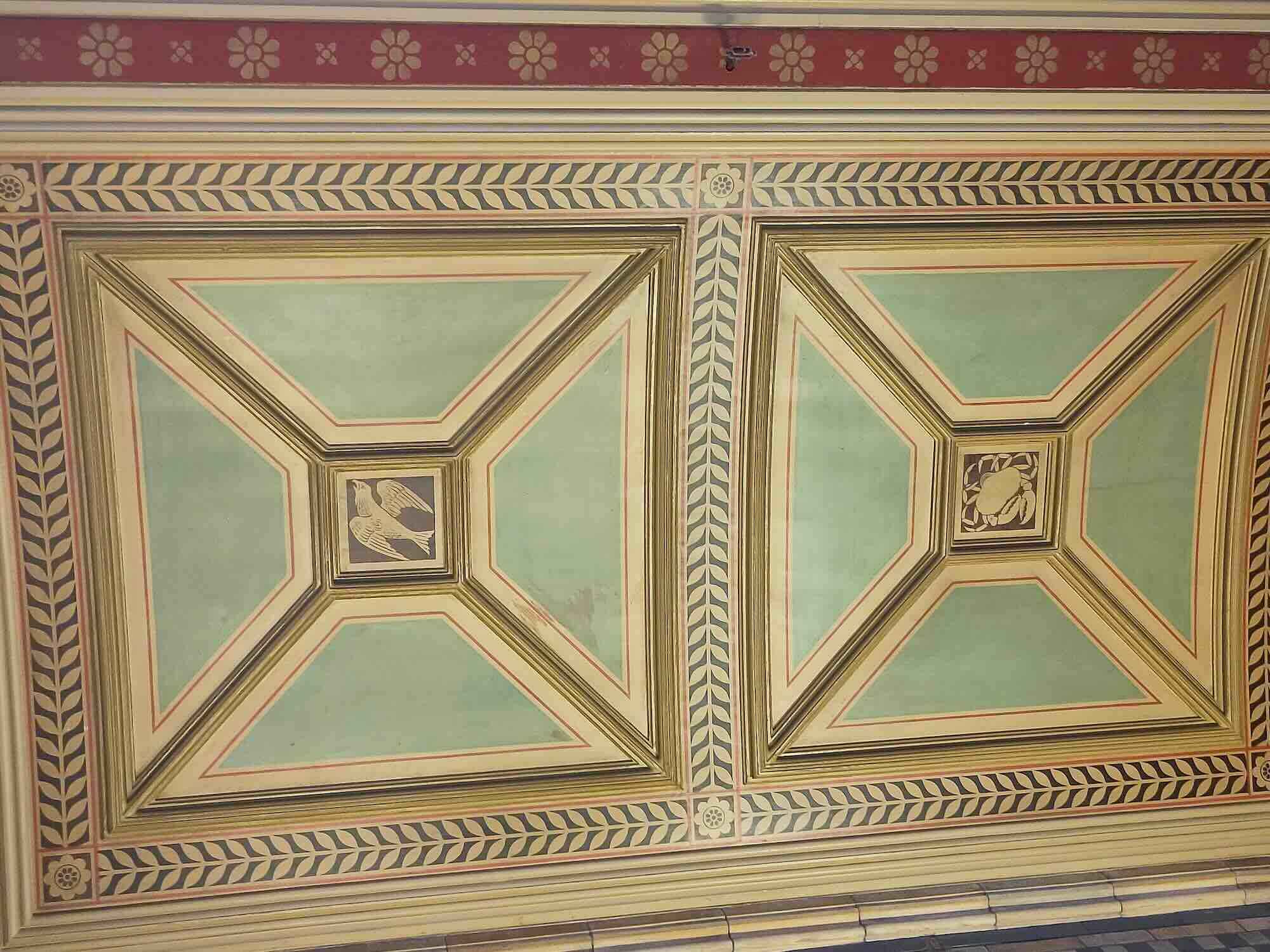
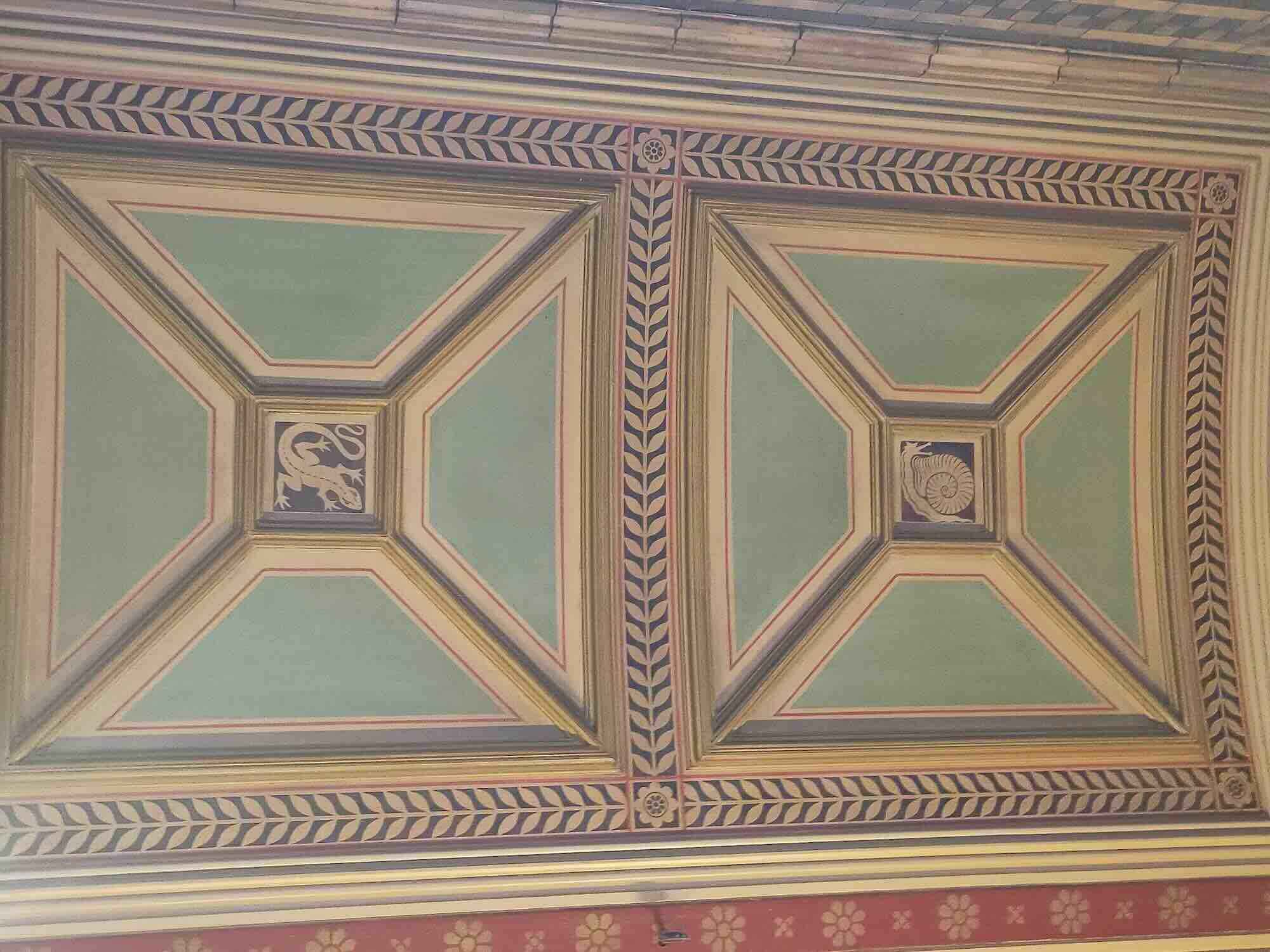
The fish in the museum shop are carved so cleverly, with the background of waved lines creating an instant illusion of an underwater scene. This would transfer beautifully to an embroidery design.
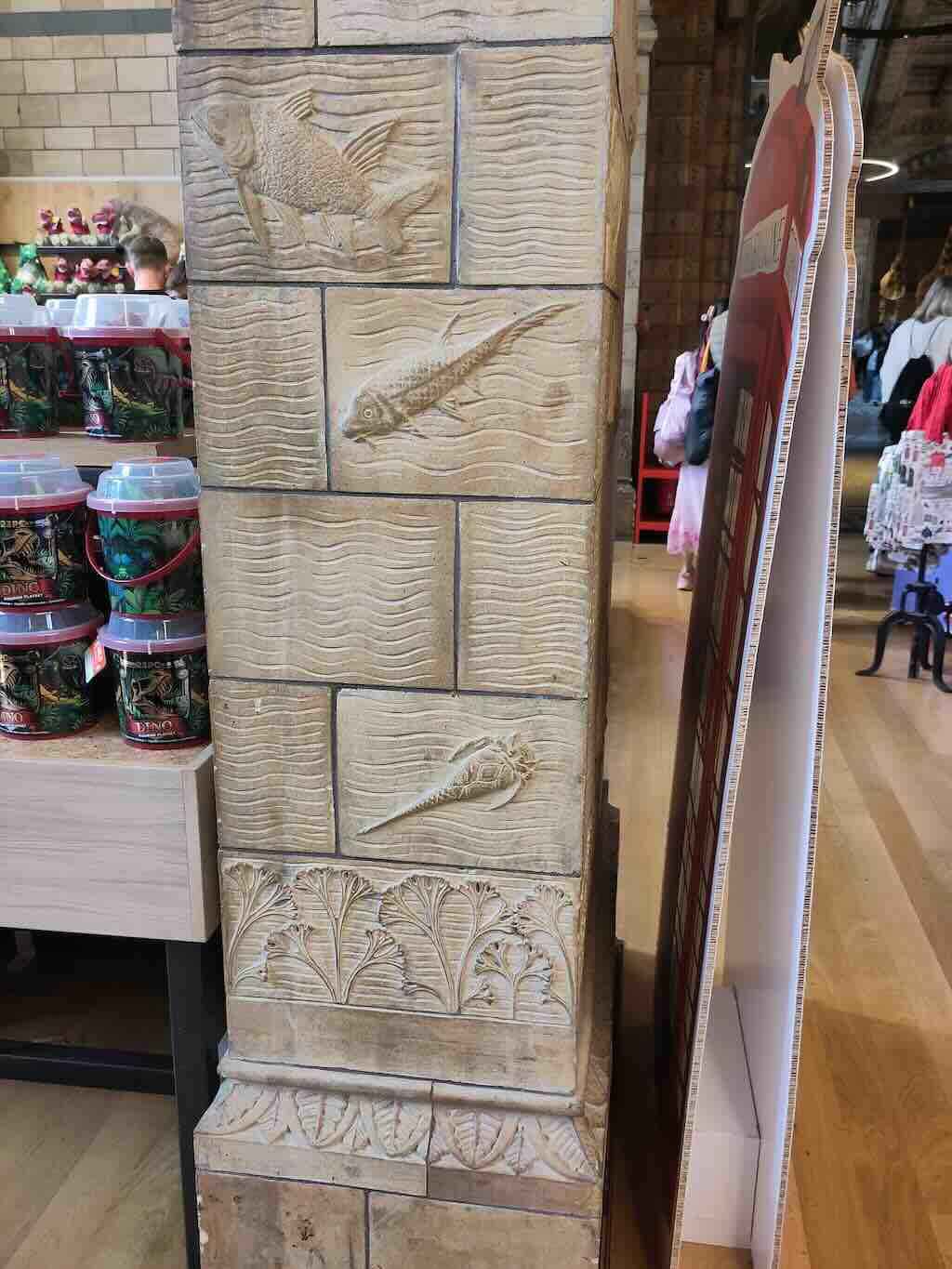
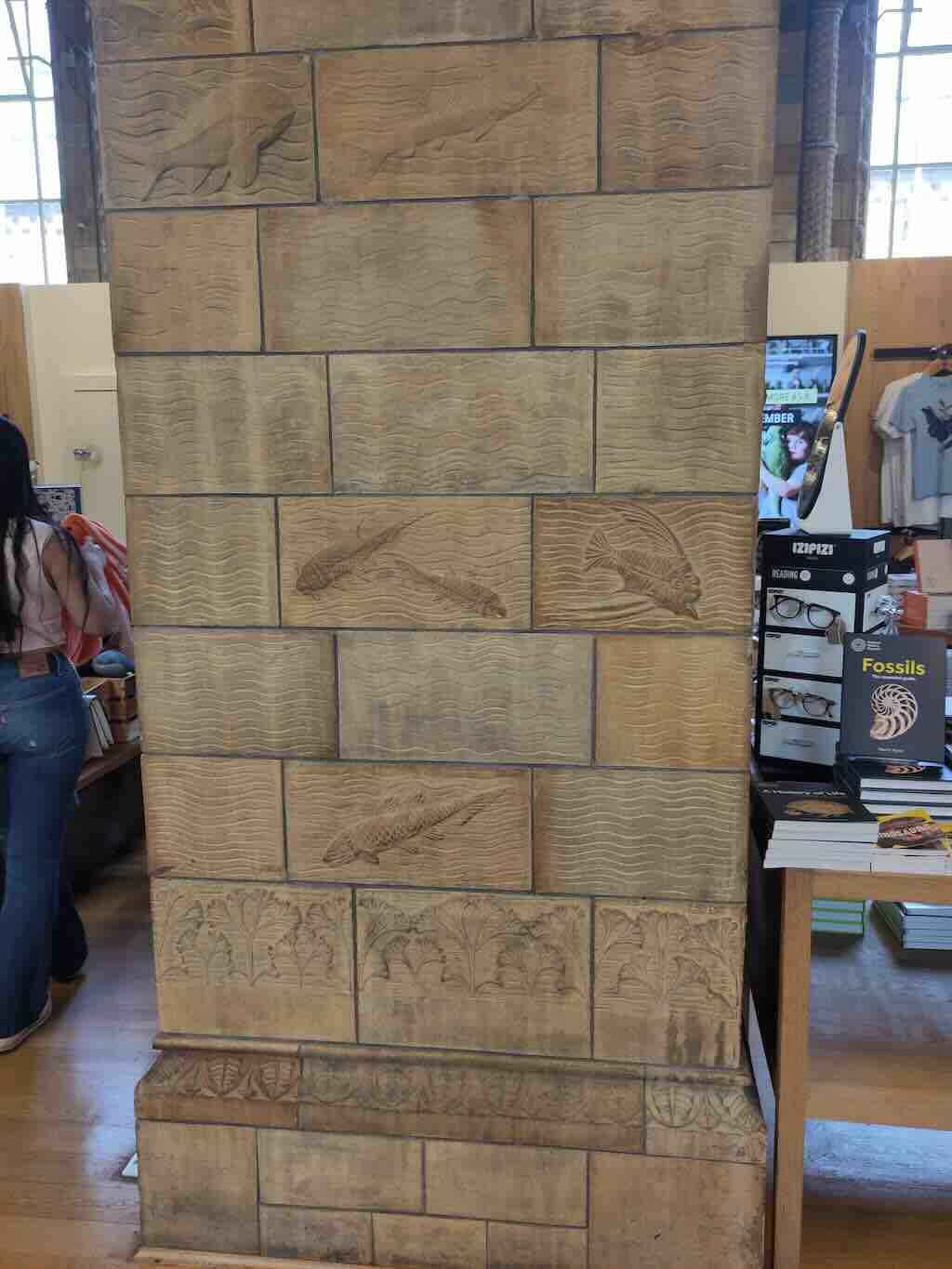
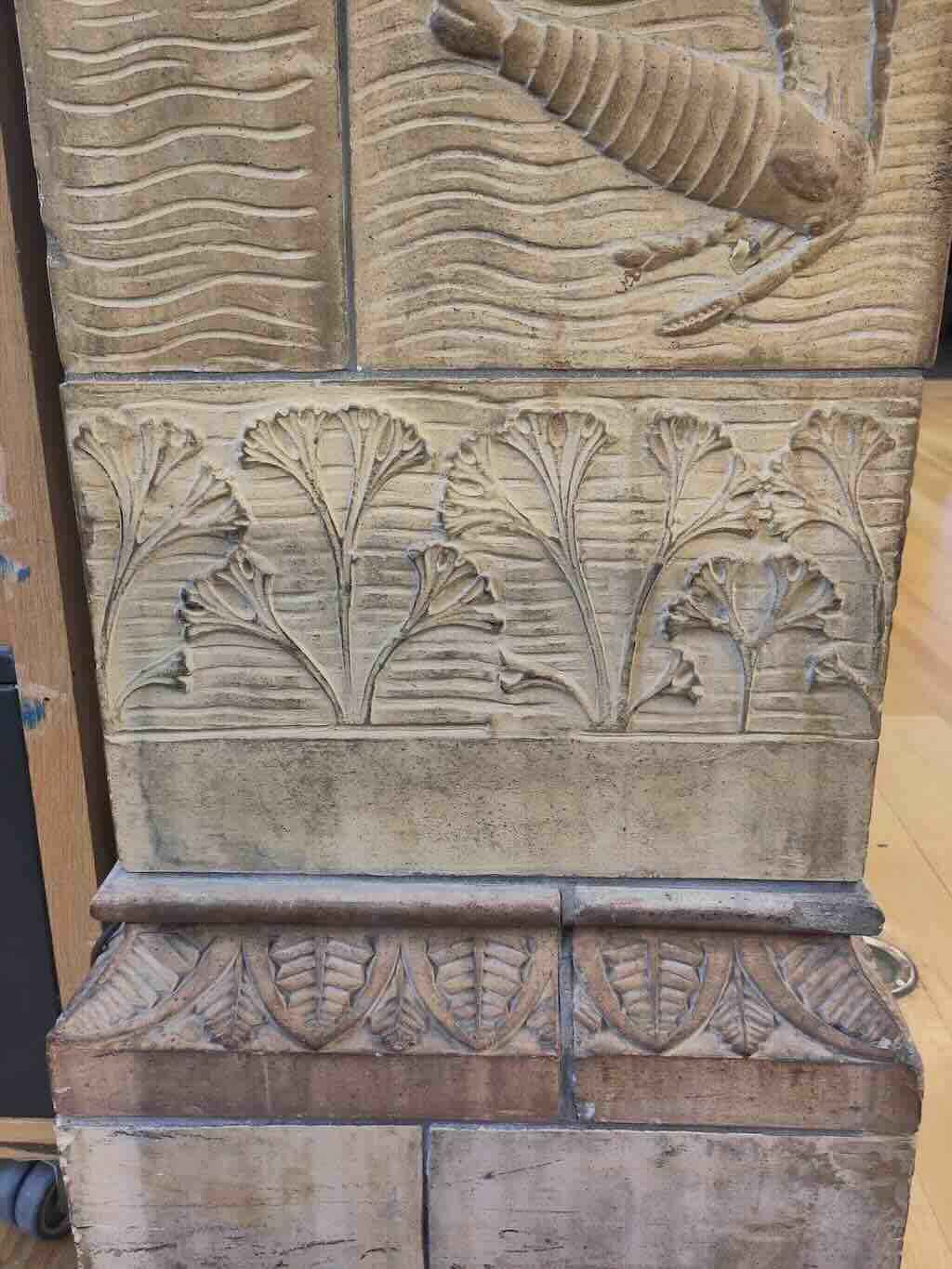
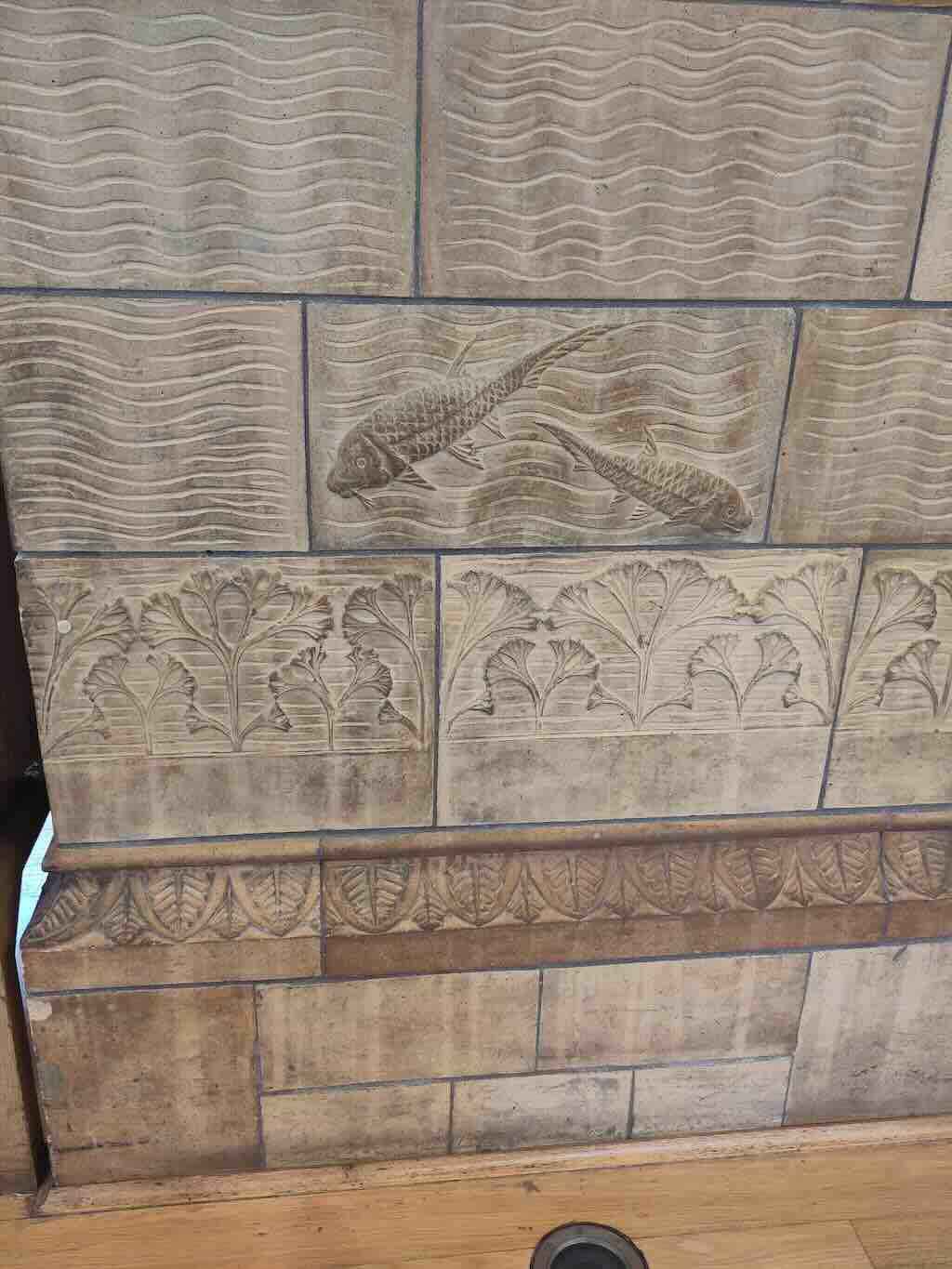
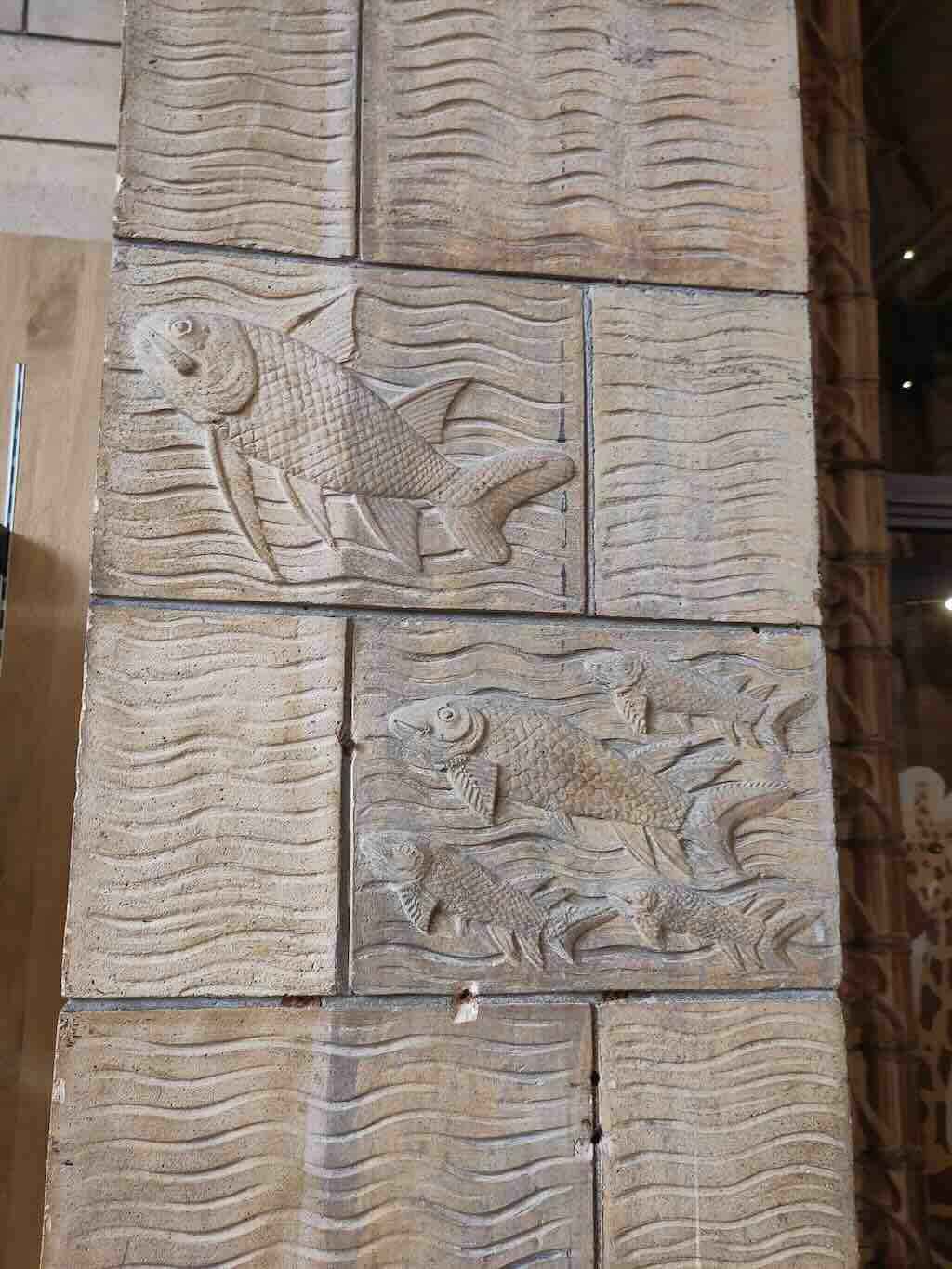
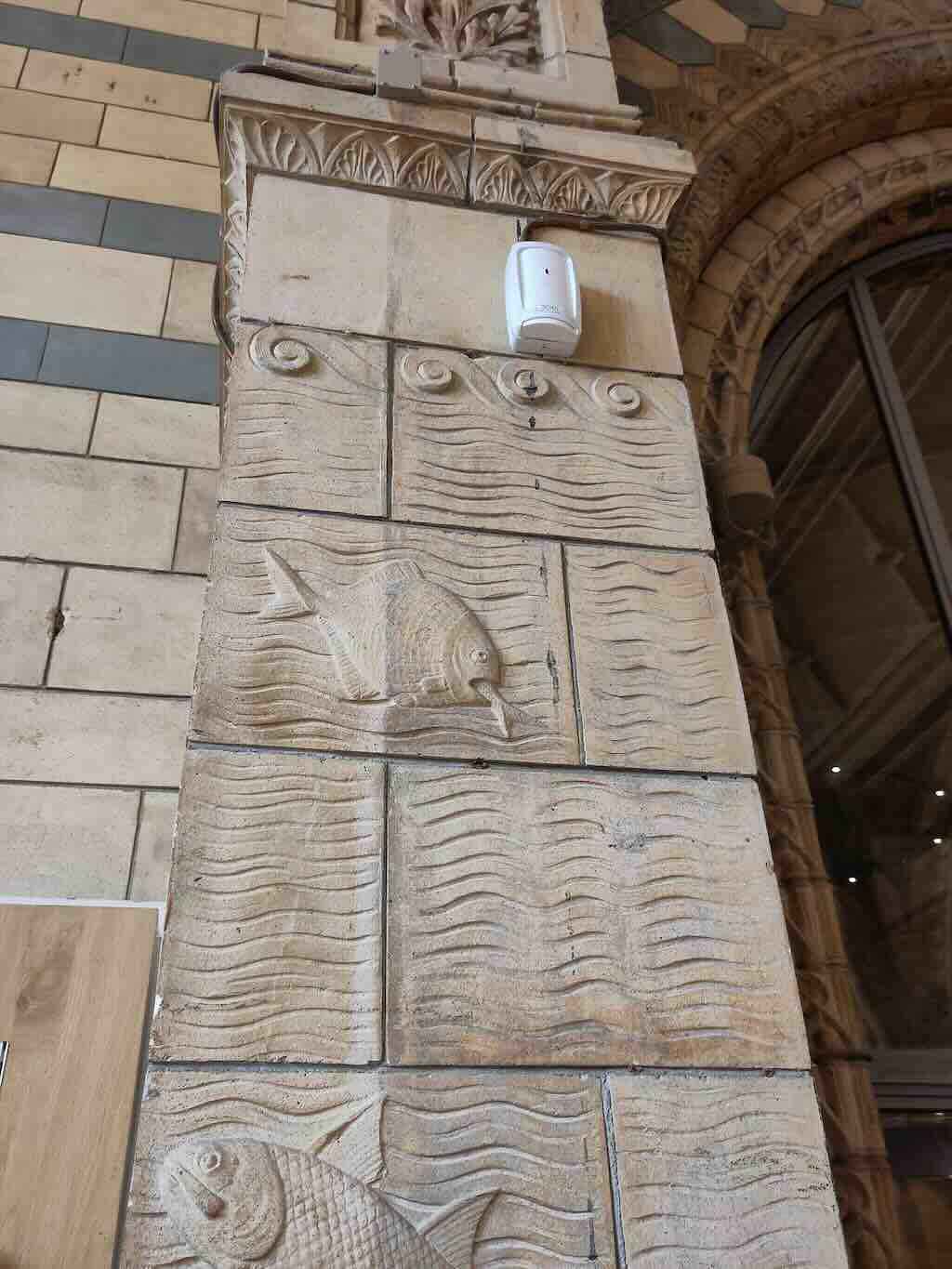
There are also tons of geometric patterns on practically every surface in the museum. These make for perfect inspiration for border designs, or simply for detailing or stitch-filling ideas within your work. Don't shy away from pattern in your work - some of these patterns would work beautifully on clothes, like those in our musicians range.
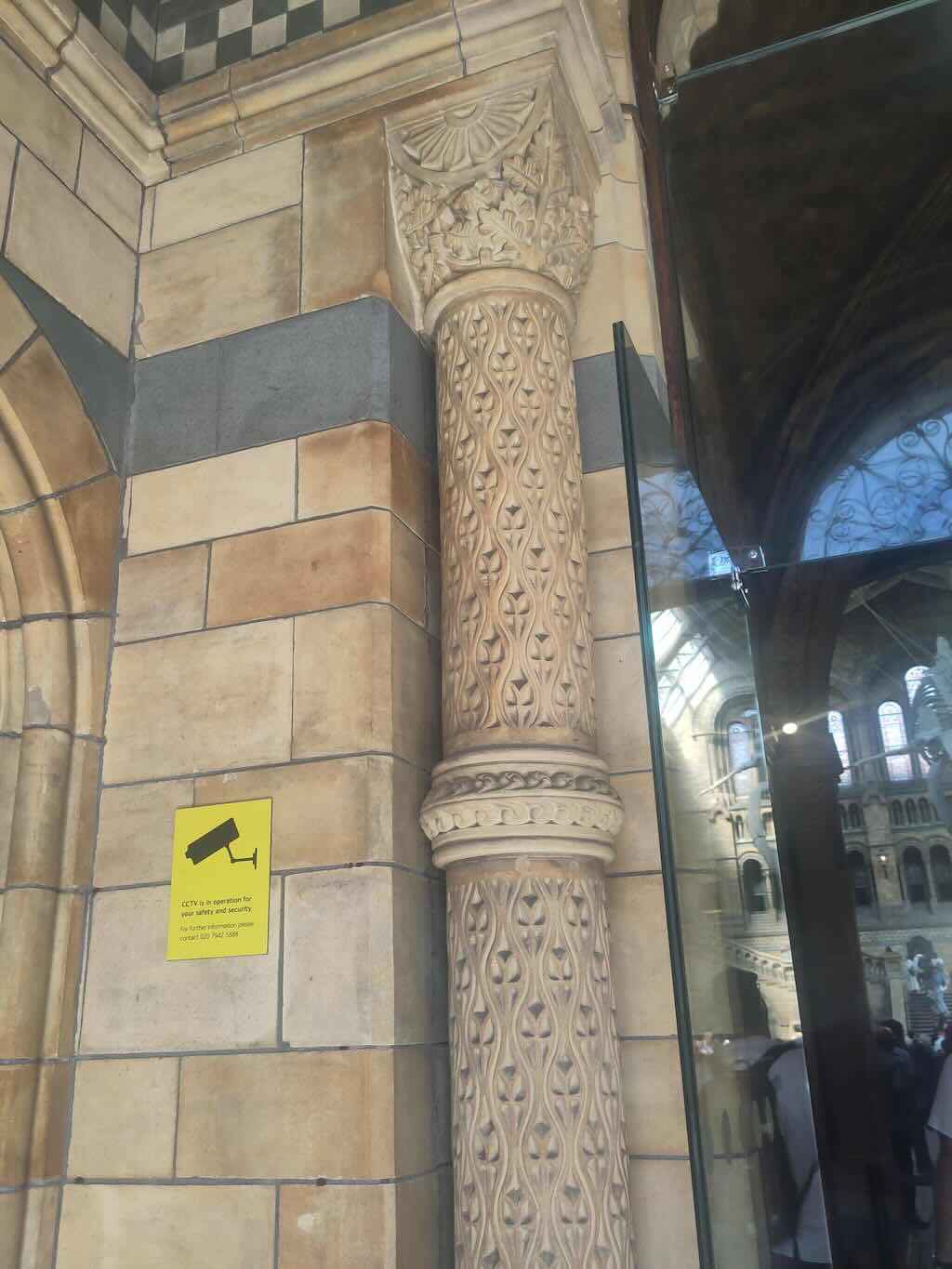
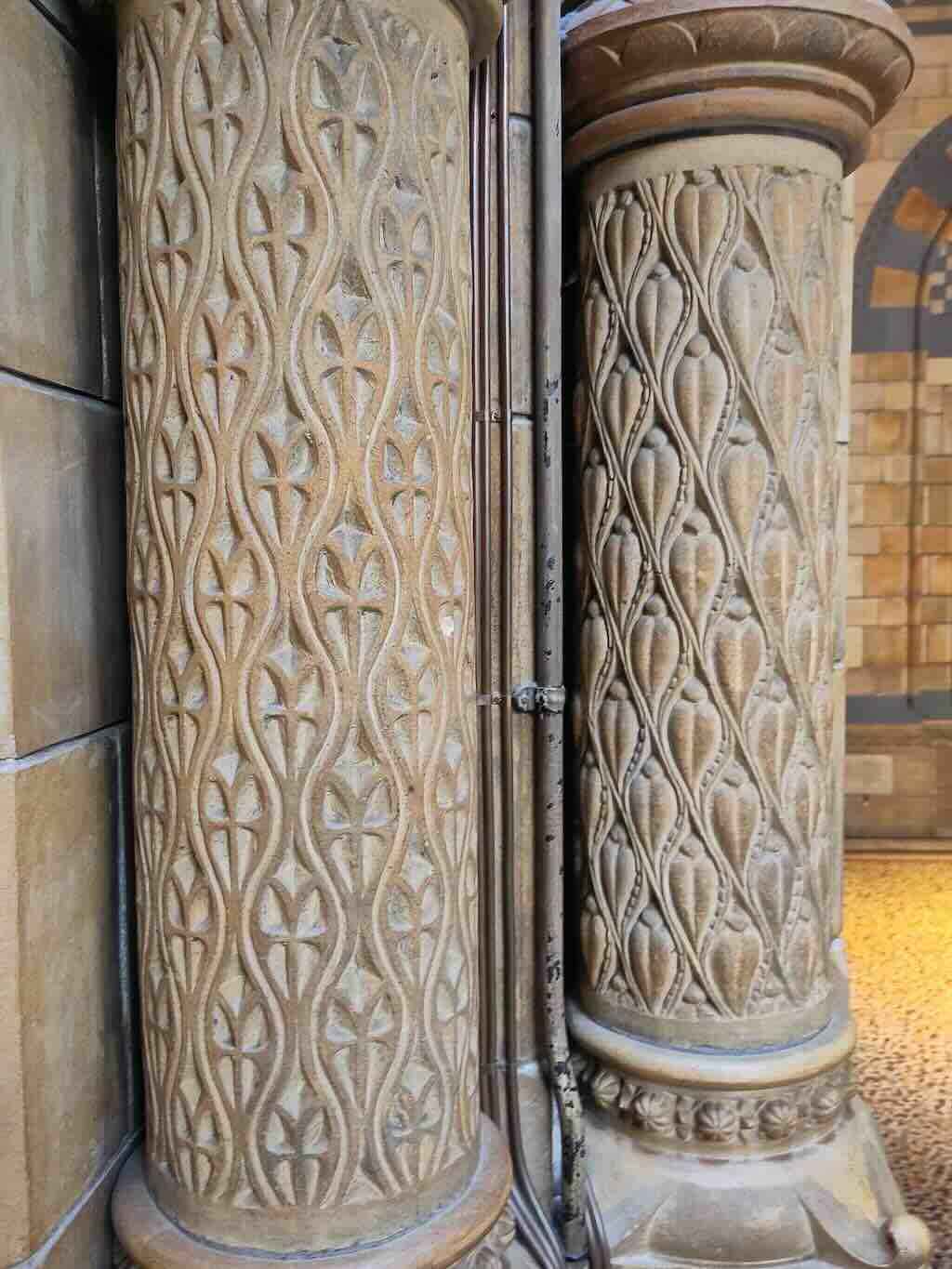
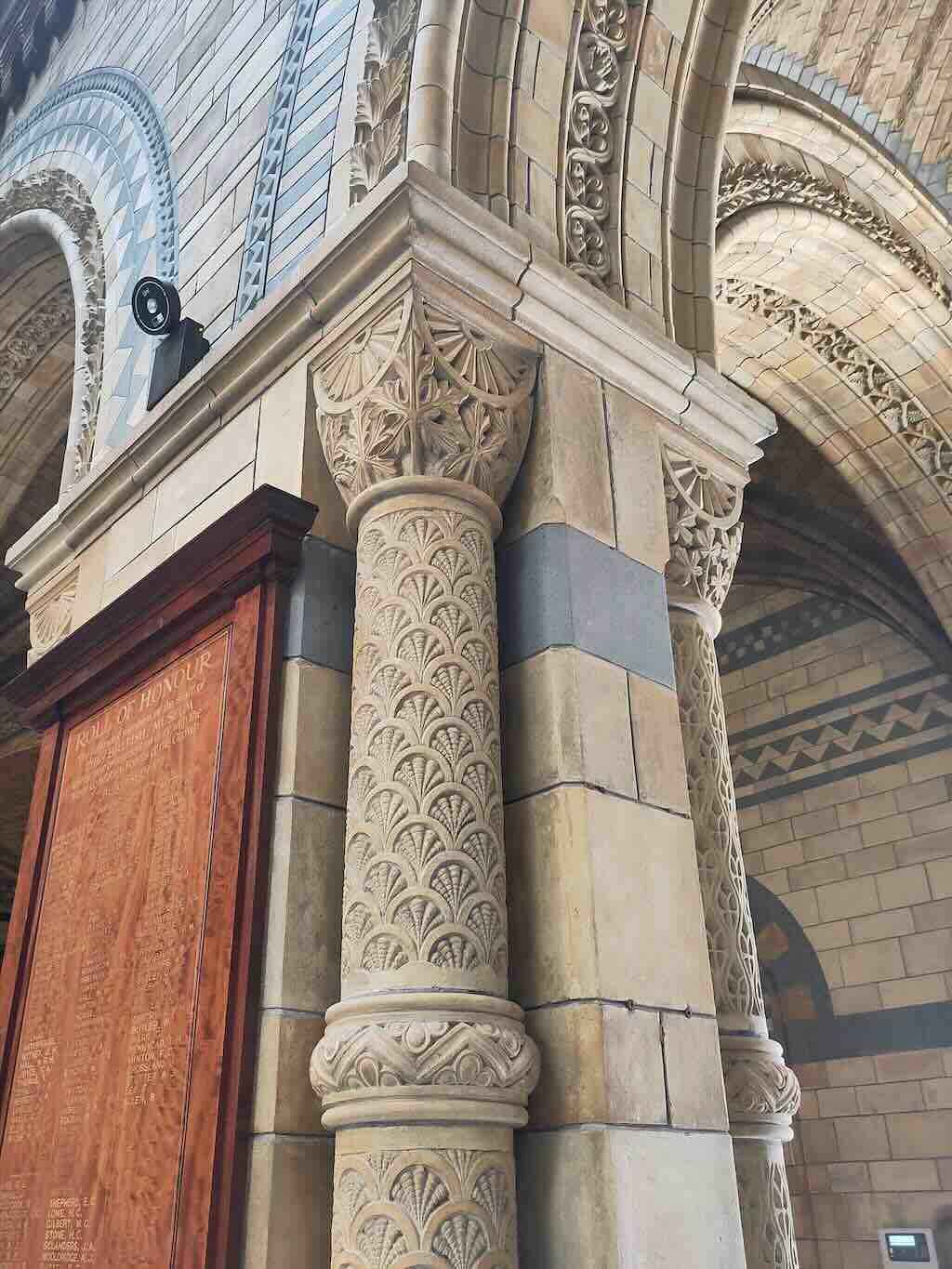
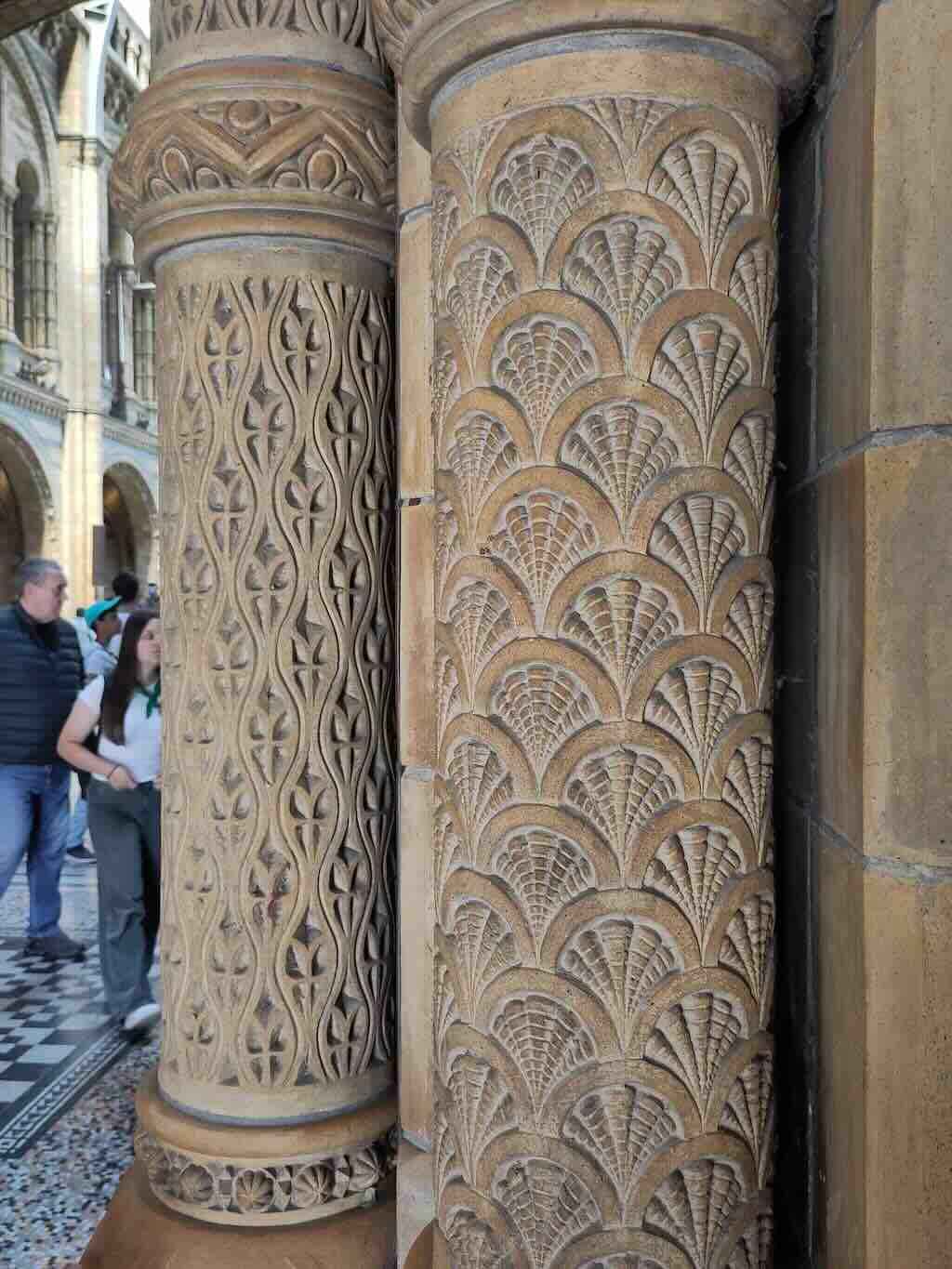
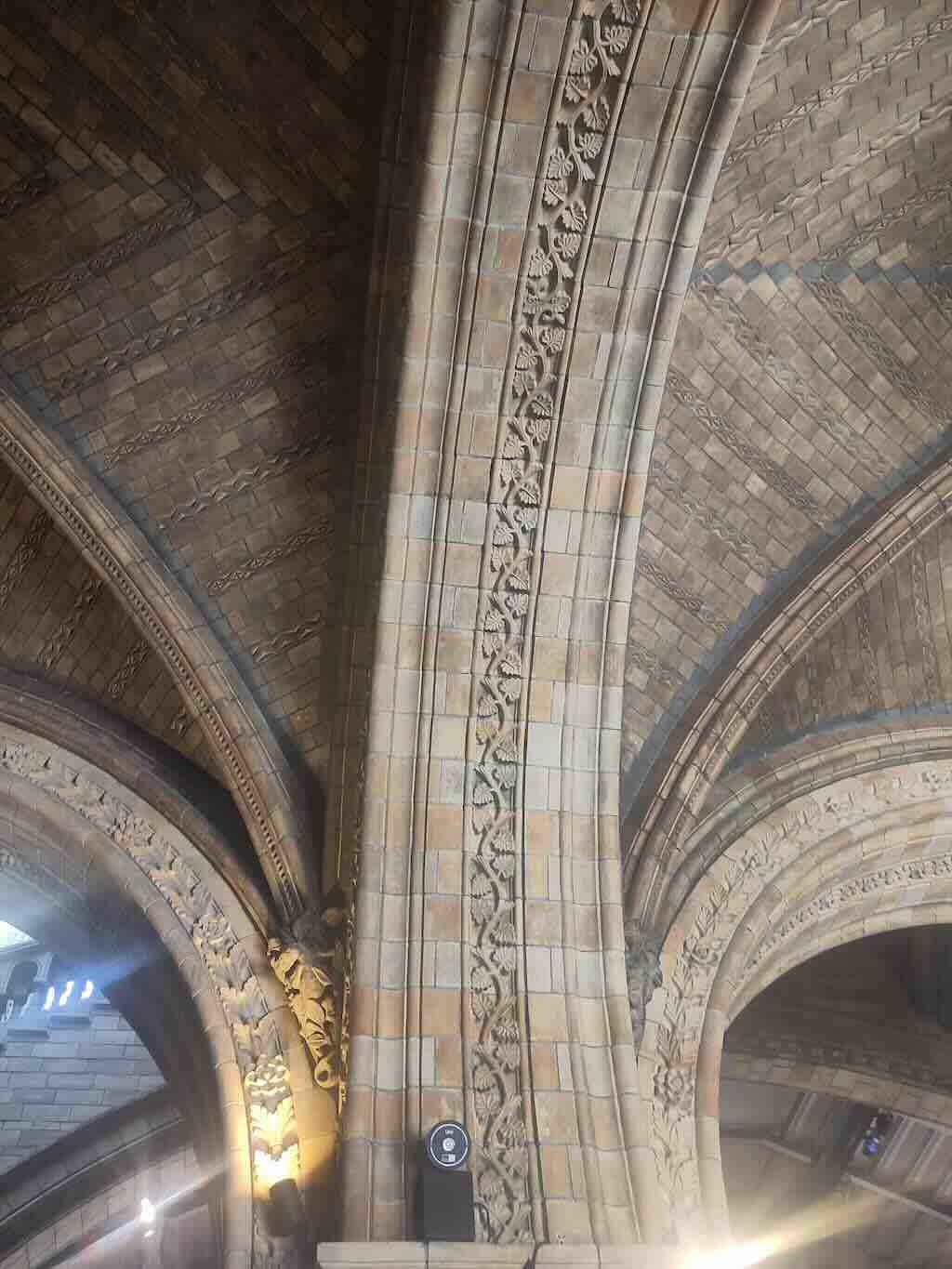
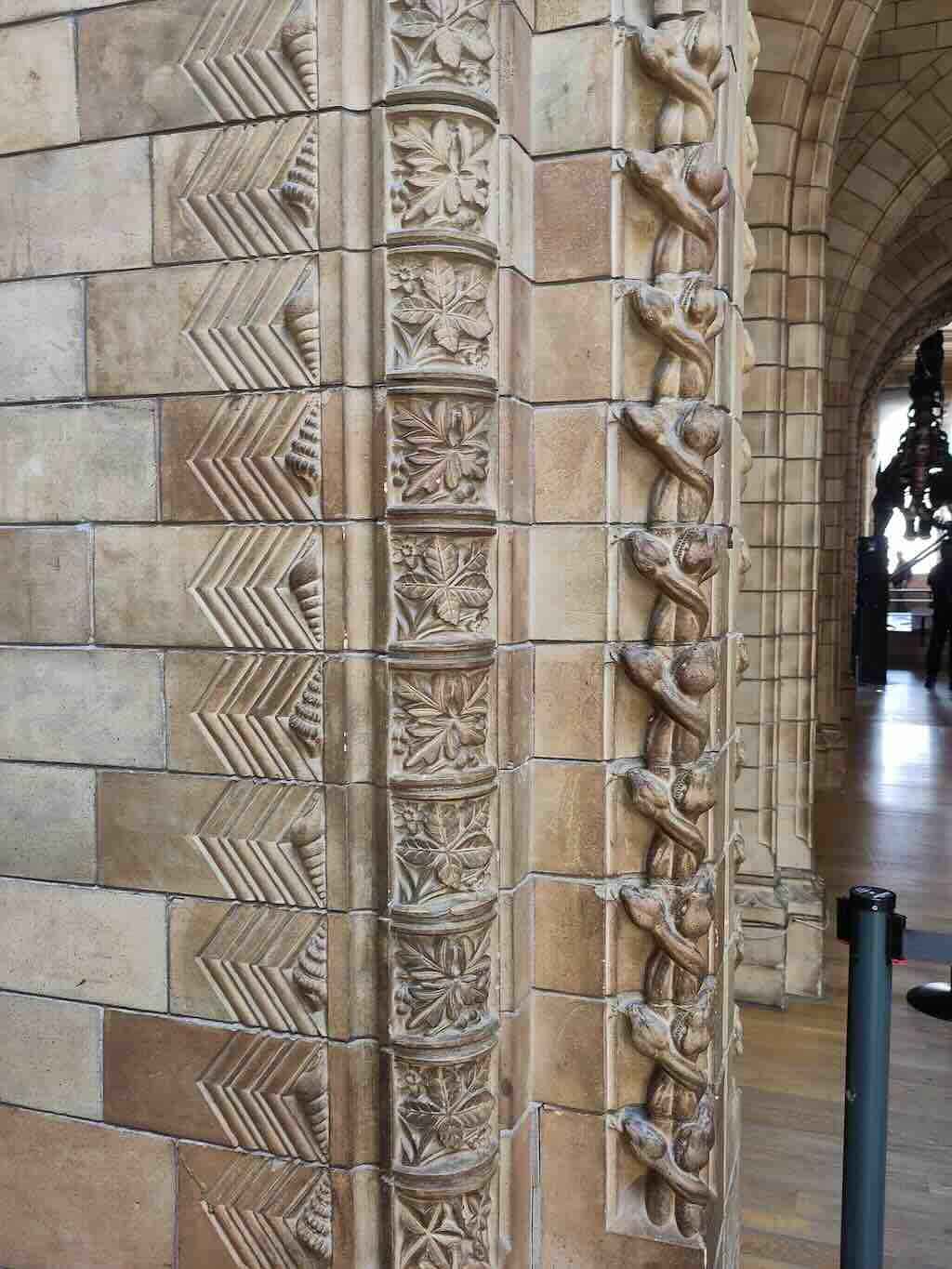
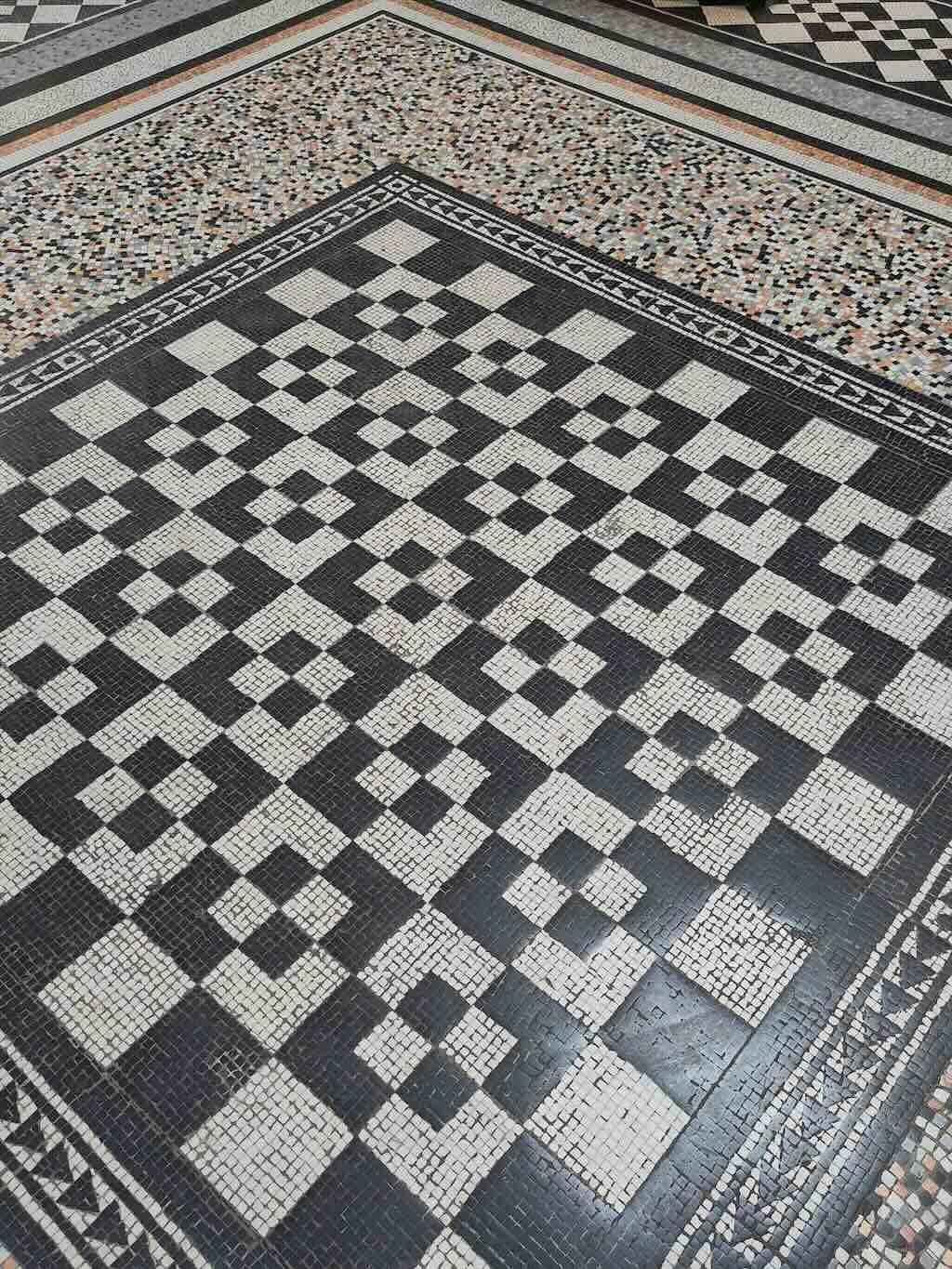
Sometimes if you’re stuck for inspiration, really the best thing you can do is go out and experience a place first-hand. It’s only then that you can notice details for yourself, rather than relying on photos or the things that other people have found. You might feel inspired by a weathervane, a statue, a decorative swirl on a lamppost. The Natural History Museum is of course a particularly stunning and elaborately decorated building, but many buildings, museums, or religious spaces, have wonderful details if you take the time to look. So, get outside, look up, and find what inspires you.

